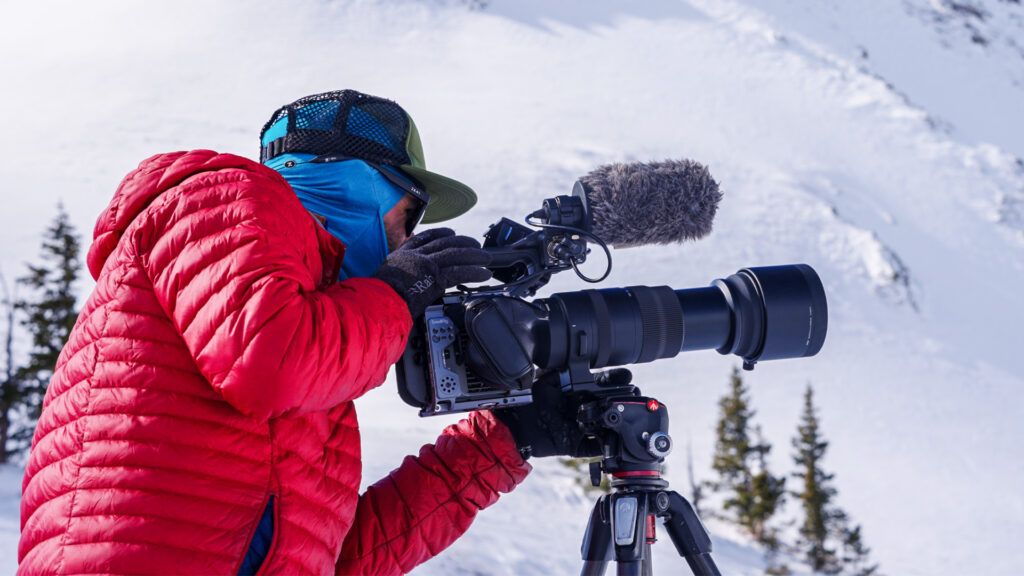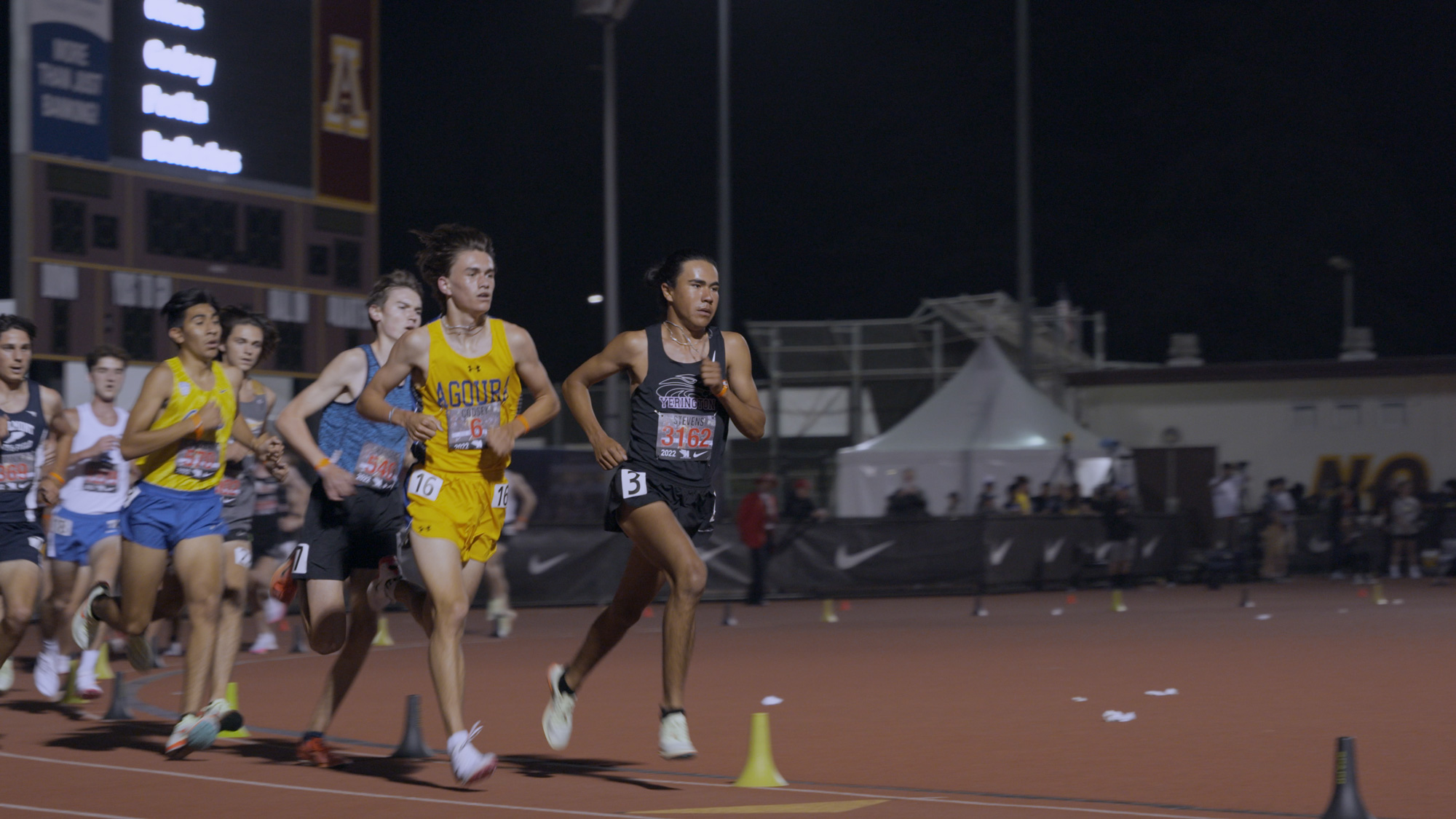
Remaining Native is a feature-length documentary which just had its world premiere at SXSW Film & TV Festival, where it was recognized with both the Special Jury Award and Audience Award for a documentary feature. Sigma is a sponsor of the film, which was shot exclusively on Sigma lenses, including Cine Primes, as well as Art, Sports and Contemporary lenses. We conducted the following interview via videoconference after its debut. The following interview has been edited for brevity, clarity and flow, and has been approved for release by all involved parties.
Introducing Paige Bethmann and her filmmaking journey
Paige Bethmann is a Haudenosaunee woman and first-time feature filmmaker. Originally from upstate New York, she relocated to Reno, Nevada to make Remaining Native where she currently resides. Paige has worked in non-fiction television for various digital and broadcast networks such as ESPN, PBS, Vox Media, YouTube Originals, USA, and NBC for over 10 years. Paige was recently named one of DOC NYC’s 40 under 40 Documentary filmmakers to watch and has been supported and recognized by the Sundance Edit & Story Lab (2023), The New America Fellowship (2024), and The DocLands DocPitch (2023) – just to name a few. She is a graduate of Ithaca College, with a bachelor’s degree in Film, Television, and Radio from the Park School of Communications.
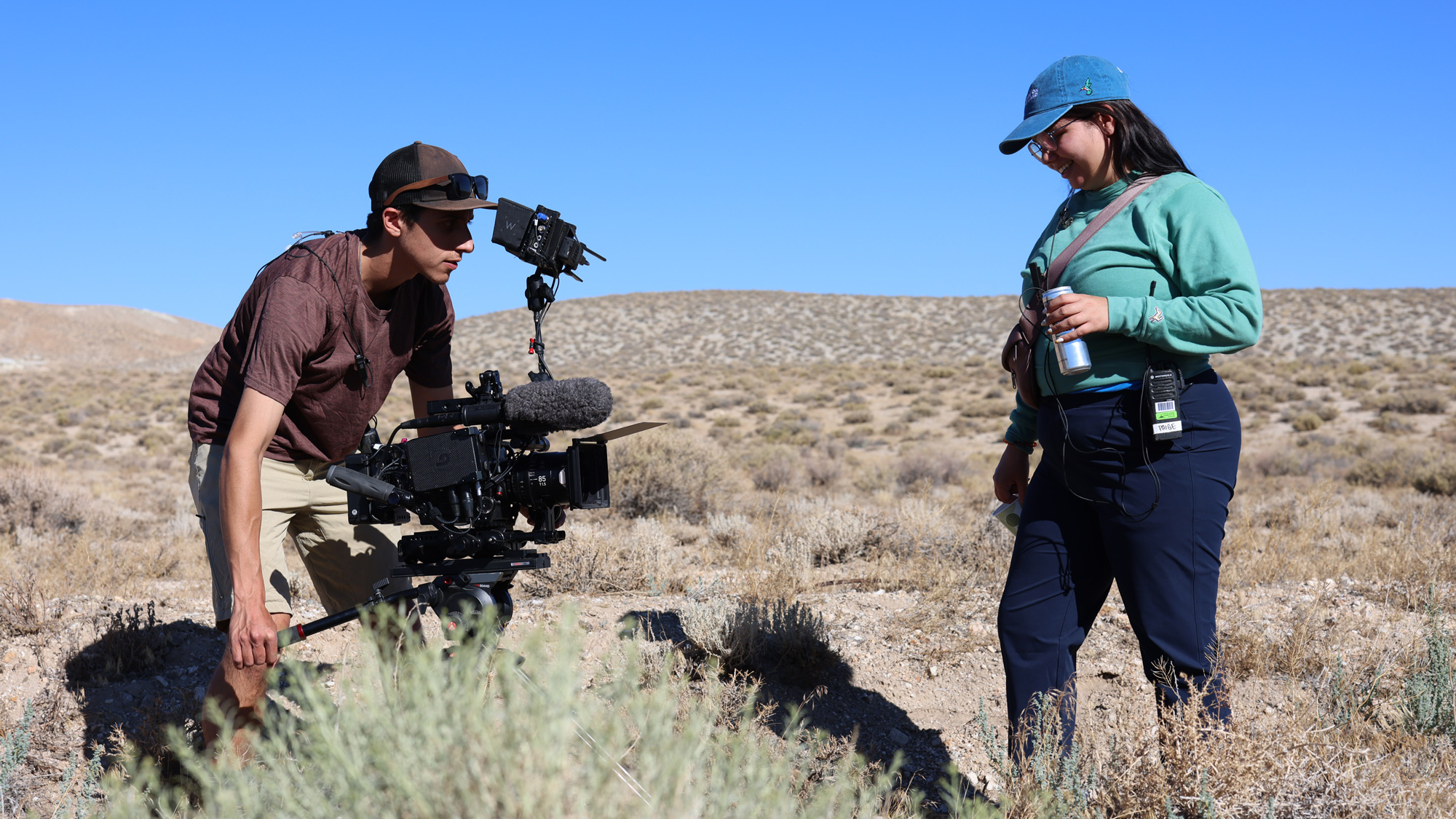
Sigma:
Congratulations on your directorial debut, Remaining Native which has already gone on to win two major awards at SXSW – the Audience Choice Award AND the Documentary Feature Special Jury Award after several years in the making. Shortly, it will also go on to screen at the Salem Film Festival in MA at the end of March and the Riverrun Film Festival in NC, plus a few other selections we can’t quite announce but are equally prestigious. How does this all feel?
Bethmann:
It’s really surreal.
This project has been a long time in the making, and it’s been four years of trying to figure out how to tackle something as profound and big as Indian boarding schools—but in a way that is through the eyes of a 17-year-old kid and stays true to his family and his story.
A lot of time and care has gone into this, and it feels amazing to have accomplished what we set out to do and to have everyone come together at SXSW. We had a crew of around 30 people come out to Austin to be there and support us, and it just felt magical to feel the responses from the audience—to have so many people connect with the film.
We also hosted a 5K run alongside Nike and had over 600 people sign up. So, you know, you don’t even have to be interested in the topic of the film to connect with it—if you’re a runner or interested in sports, there’s another way in.
We’re just excited to finally share it, to connect with so many different audience members, and to be validated—not just by the awards, which are nice, but also by the community we’ve been building along the way.
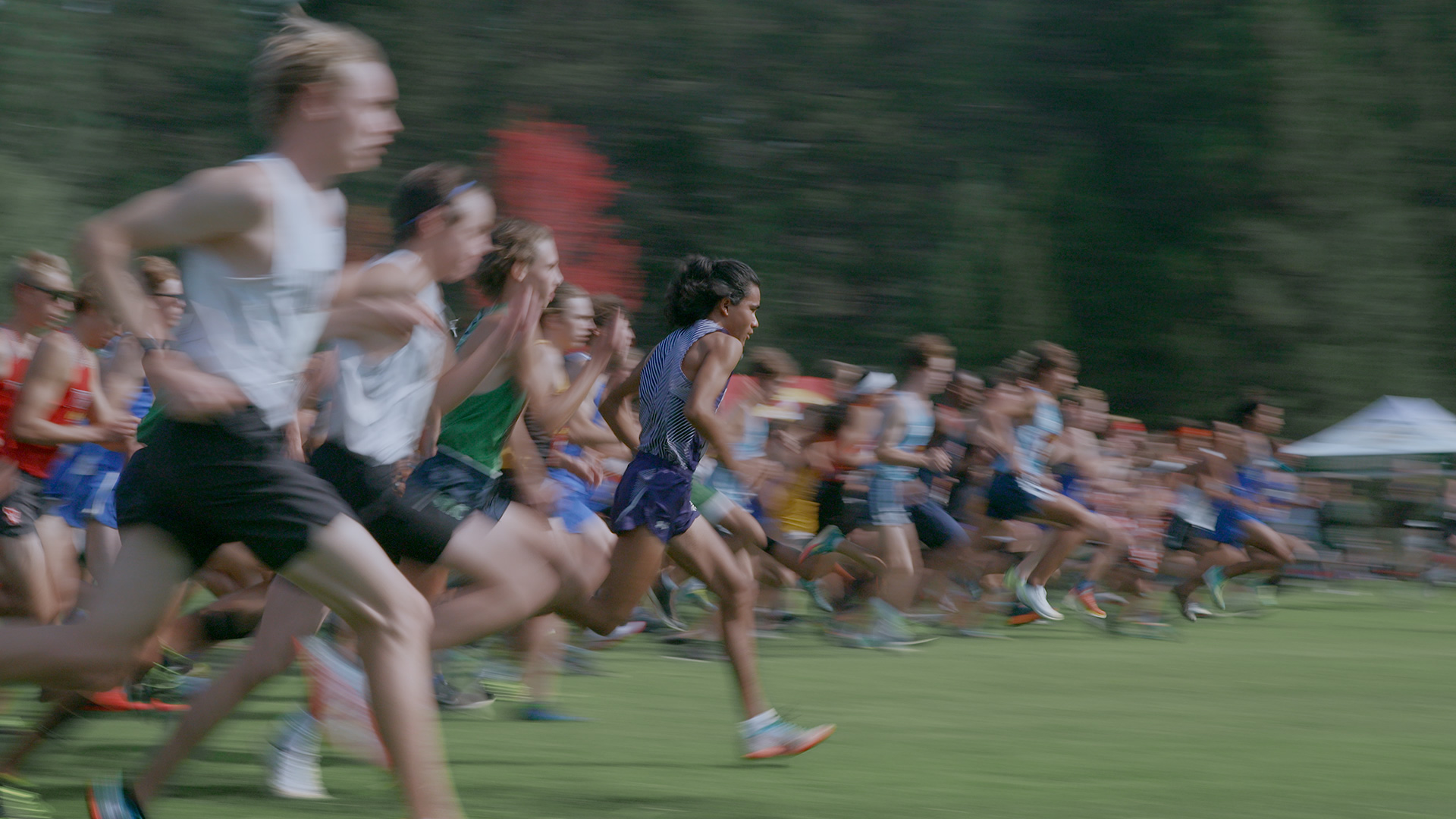
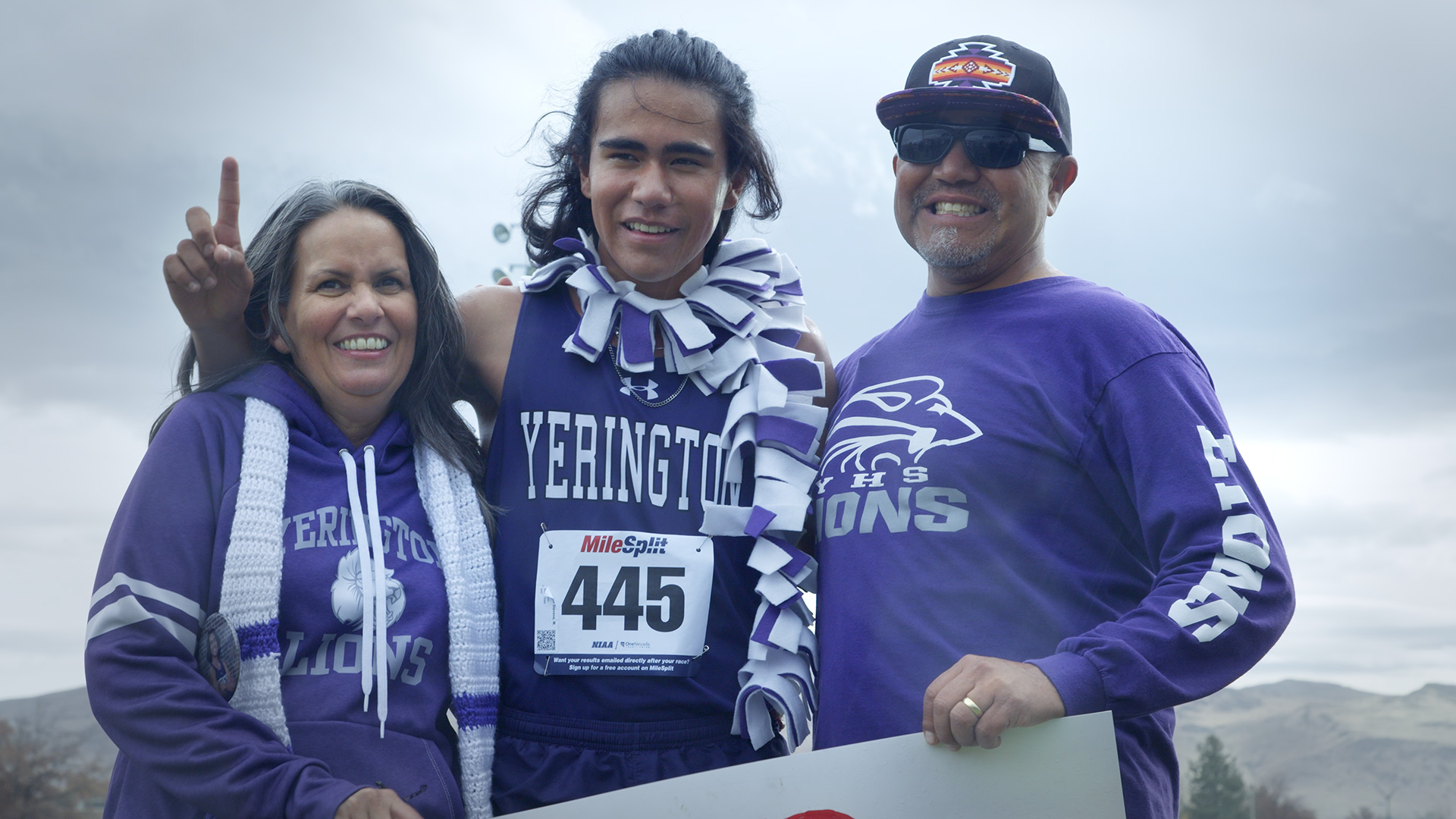
Sigma:
You quote your grandmother in the pitch deck of this film who told you, “Stories are spoken. Words fall off the tongue and onto the land to seep into the dirt. These stories root down and grow back sprouting as living beings to be cared for and harvested as memories to be passed down again and again…”
These are such resonant, evocative words and after watching and reflecting on Remaining Native, feel so appropriate both narratively and visually, taking place in the desert of America’s west. One of the most significant themes in the film deals with generational legacy, and visually, the land, the setting itself, plays a crucial role in that story. Did you find that any particular Sigma lenses helped capture the vastness of the desert landscapes, or conversely provided more intimacy in moments of reflection and storytelling?
Bethmann:
Yeah, I mean, great question. You know, the land plays essentially a character in the film, and it deserves the same sort of weight and craft as the rest of the characters. I think what we wanted to make sure of was that we were able to capture it in a way that was as dynamic and beautiful as the landscape itself.
The Sigma Cine lenses—we shot a lot on the prime lenses, a lot on the 24mm for those wide shots, and the 35mm to make sure we were able to capture the scope of the land and to have it just be profound.
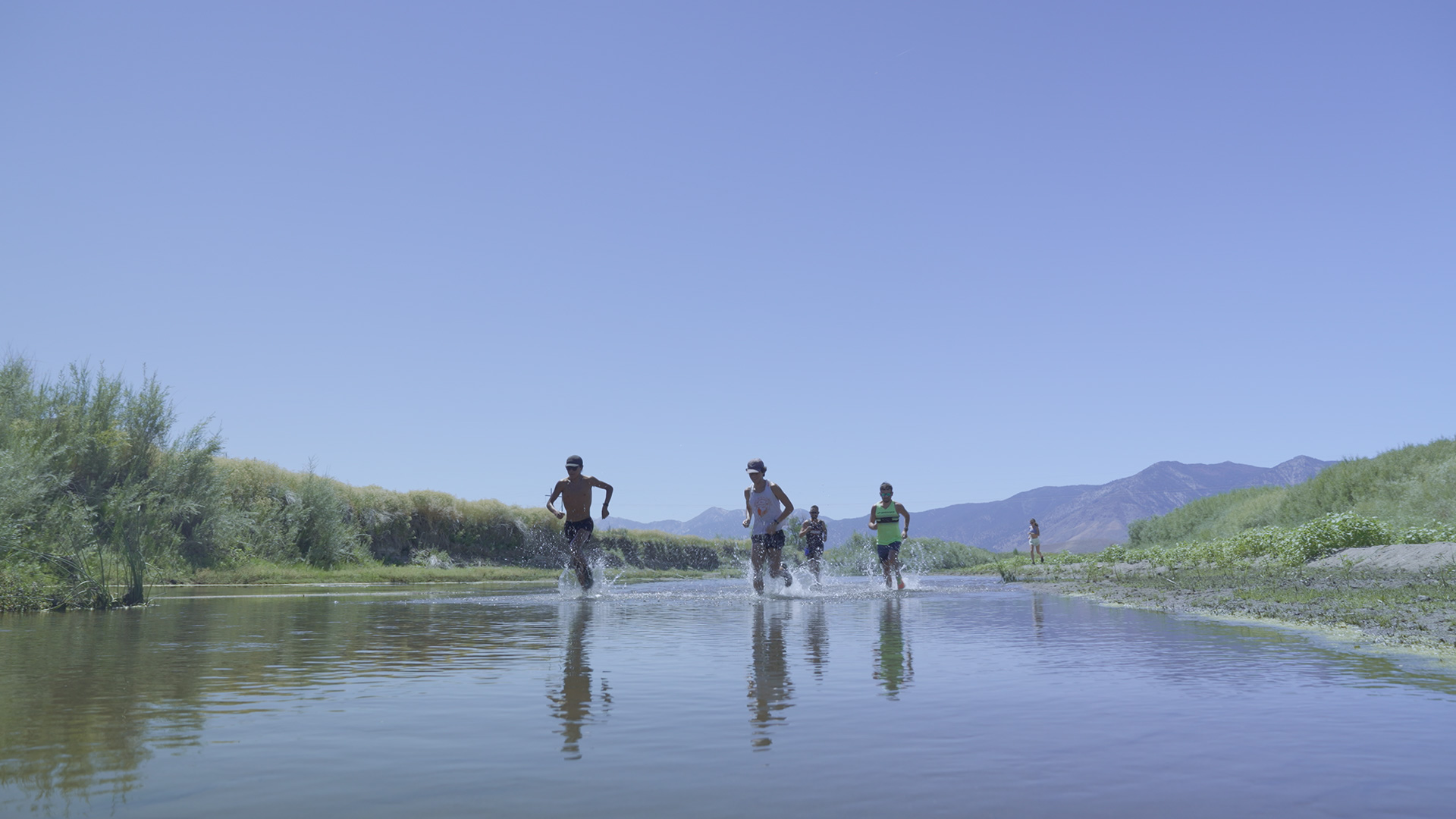
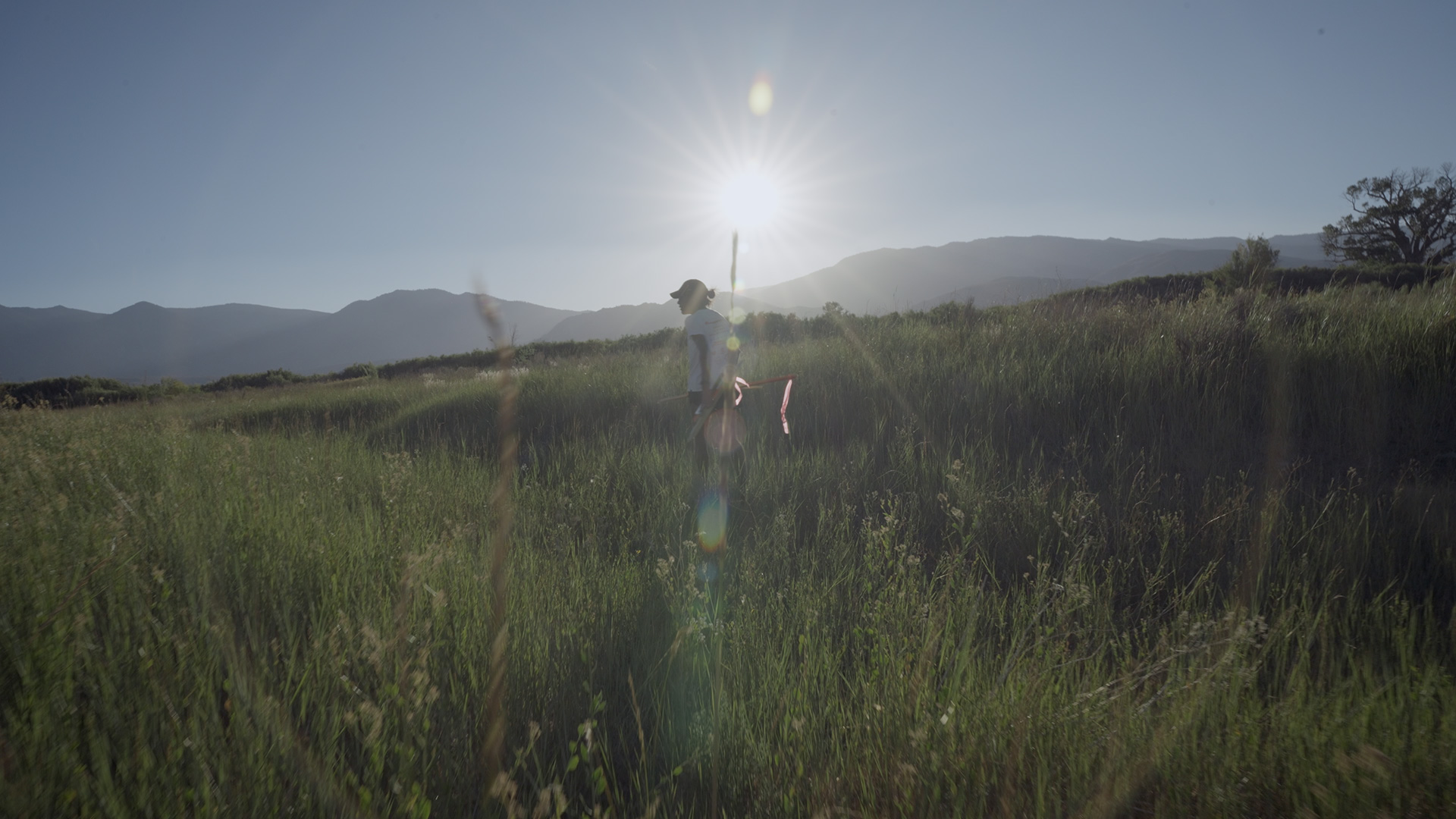
You know, our stories are held by the land. Like you quoted my Grandmother—those stories weren’t written down in books. They really are passed down through an oral tradition, and the place in which our stories are told is so important. So to be out there in the desert and to actually understand that we were walking on a memory of his great-grandfather and all of his (Ku’s) ancestors—we wanted to make sure we were paying respect to that place.
To be able to shoot really wide on those lenses—and then we actually went out again for a third year of the Remembrance Run and shot purely just texture. So we were actually using a lot more of the close 85mm lenses. We were trying to get really close to things like dirt and dust, looking for the sun flares, looking for texture. For example, the pine nuts—we had a shot in there of the crystallizing of the pine nuts, which are a traditional food of the Paiute people. We wanted to make sure we were able to get as many details as possible.
Also, we were shooting on some of the photo lenses as well. We shot a lot on the Sigma 100-400mm F5-6.3 DG DN OS | Contemporary, which came in handy when it came to these long, wide shots that were, you know, compressed—to be able to get the vastness of the desert and see how hot it was. I’m sure you saw the heat waves happening in the background of a lot of these shots.
And also, keeping up with a runner—it’s very difficult to film running because you’re constantly chasing after them. We had to get really creative in how we wanted to shoot Ku, because he’s also so graceful as he runs. He’s so beautiful when he runs, and it’s hard to show the effort sometimes—to show how hard he’s actually working.
So, to be able to do that on the lenses, true to what was happening in real life—what we were seeing was a pure reflection in the lenses. We were able to capture his effort, to be right up close with him, as well as do things creatively—like filming shadows on the land and filming a silhouette shot of running alongside your ancestor.
So yeah, it was fun to play with such a wide range of lenses to be able to do all of it.
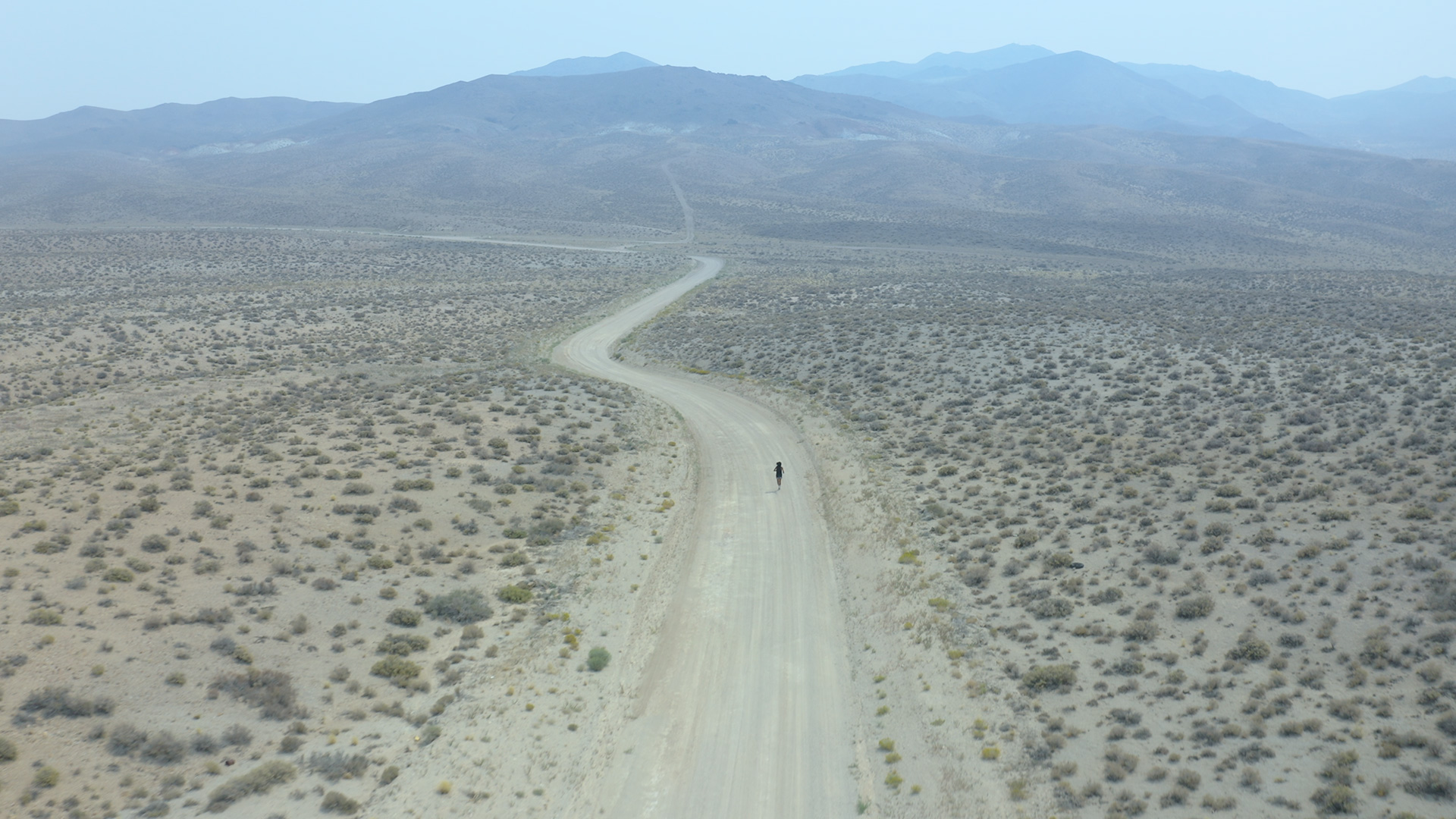
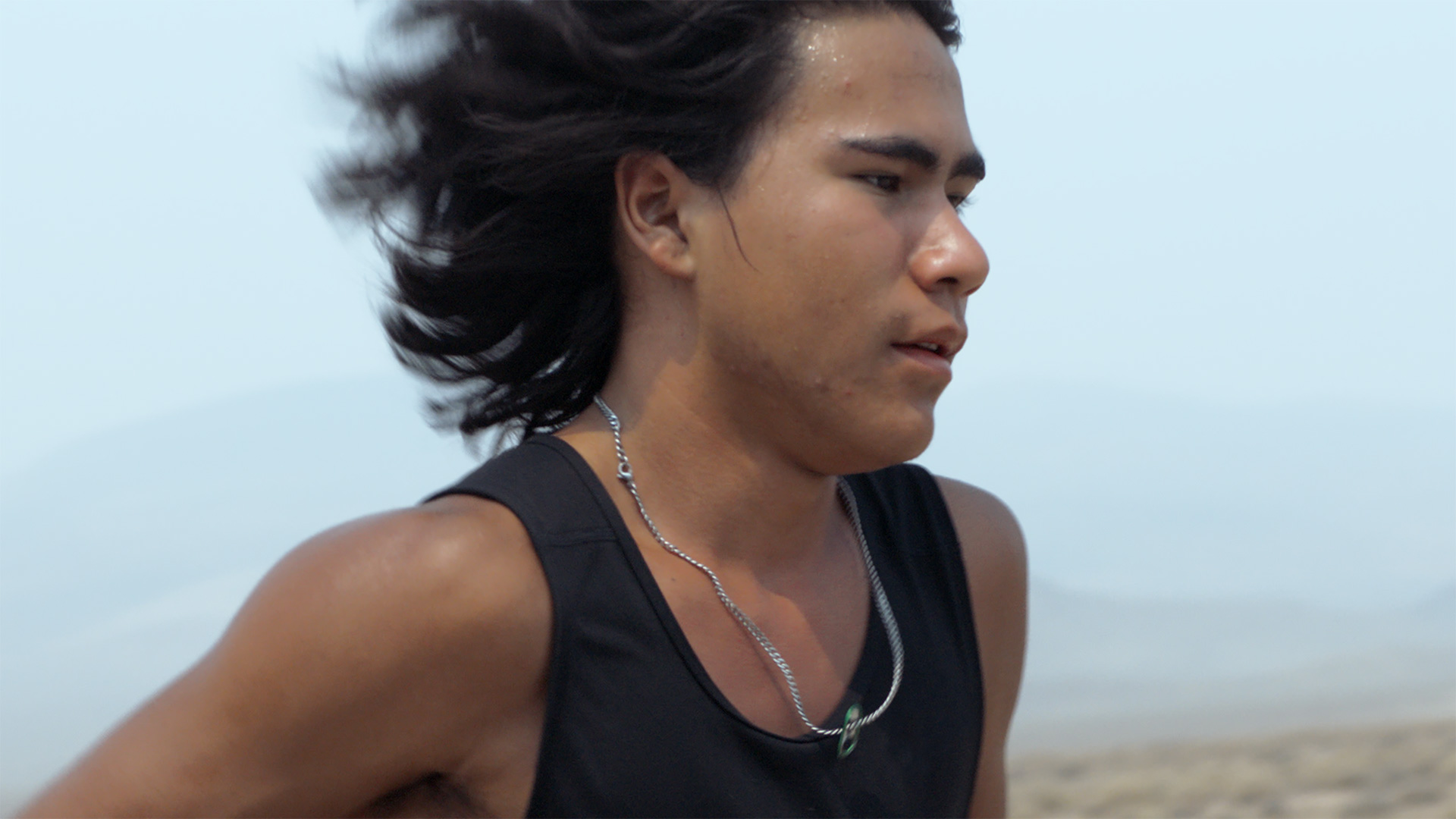
Sigma:
Continuing on this theme, as we’ve touched on briefly, the film beautifully uses the land as a character, and one striking example is a shot right around an hour into the film, where the vast foothills and meandering road create a powerful sense of scale—especially heat distortion blurred runners in the background. Can you talk about your approach to capturing the landscape in a way that connects past and present, particularly in relation to Ku’s great-grandfather’s journey?
Bethmann:
And I’m so glad you brought up that shot, because even when I watch it, I’m struck by it. When we were first selecting scenes to showcase the vastness of the desert, I remember looking at that shot and not even noticing the runner in the background at first. My editor had to point it out to me. The heat waves were so intense, and then suddenly, I saw him, and I thought, “Wow, that’s incredible.”
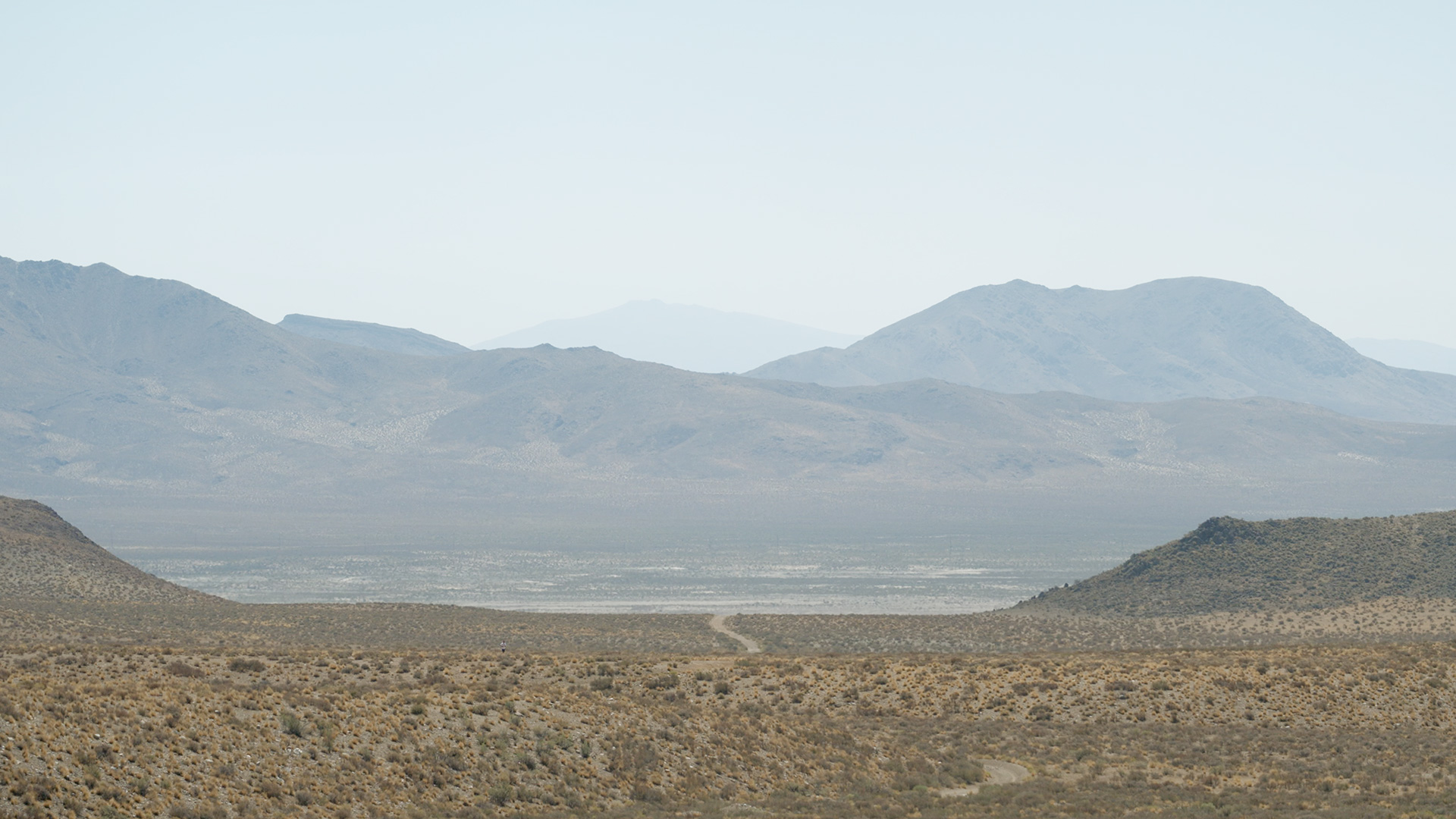
Seeing that on the big screen in a theatrical setting is just breathtaking. The sound design plays a huge role too—the desert is so quiet, yet layered with sounds. You hear the runners breathing in the distance, the crunch of footsteps. That immersion really brings the scene to life.
The scale of it all is overwhelming. You go from these close, intimate shots of the land to these vast, sweeping views, and it’s a stark reminder of the enormity of the landscape. It’s also heartbreaking in a way—watching adults push through this grueling run is intense, but imagining it through the eyes of a child is almost unimaginable.
Cultural identity and representation
Sigma:
Let’s talk a little more about your other works while we’re on the topic of gear. To date, you have shot 4 mini documentaries for Running Strong for American Indian Youth, an organization that’s been working since 1986 and it sounds like you leaned on your great experience using Sigma Cine lenses for Remaining Native – i.e. you looked to Sigma glass again. Did these prior experiences influence your decision to use any specific Sigma lenses again for these projects?
Bethmann:
Yeah. Well, for one of the documentaries that we shot with Devyn Kazhe, which follows her journey as an adaptive athlete—you know, we shot on the Sigma FF Classic Primes, and those just blew me away. They are so beautiful. Stunning.
Sigma:
They do have a lot of character.
Bethmann:
Oh my gosh, so much character.
Devyn and I wanted to approach the story in a different way. Because it’s a short film, it’s told through her voice—almost like her poetry. I mean, she’s a very poetic speaker. She tells stories about her recovery and healing in a way that allowed us to craft more space in how we set up the shots, a lot more than we did in Remaining Native, which covered two years of literally chasing a teenager around—who’s a runner.
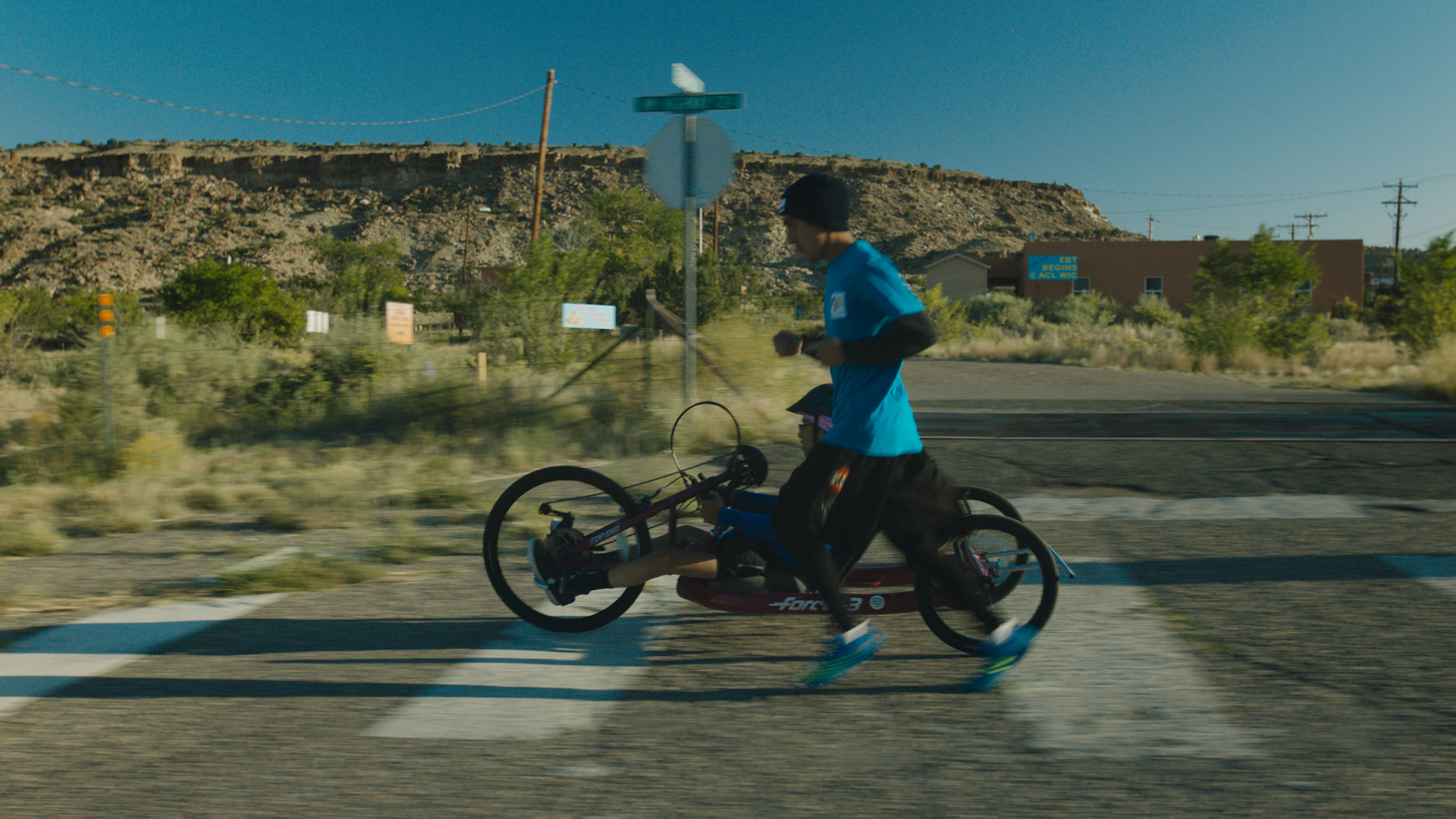
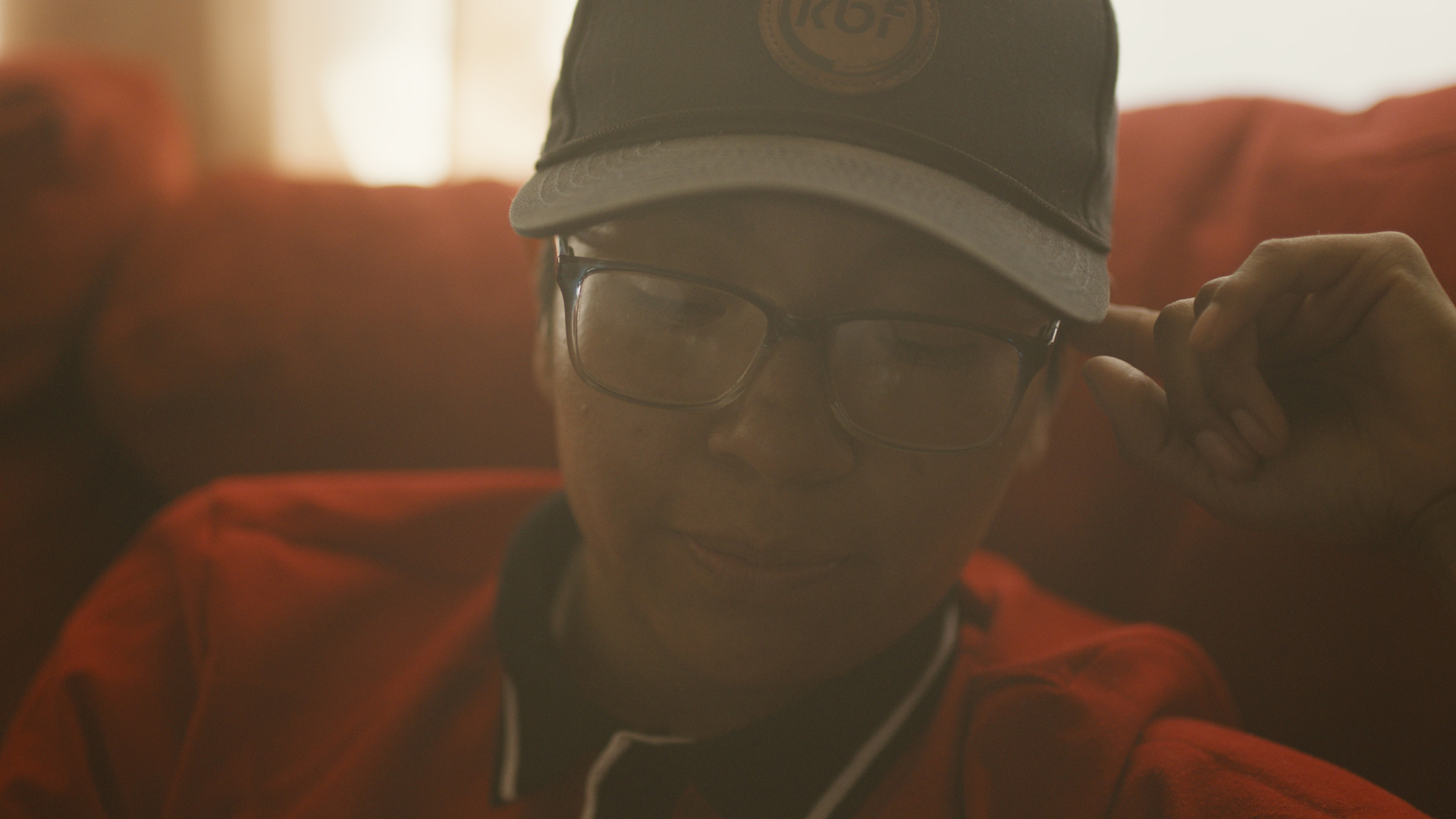
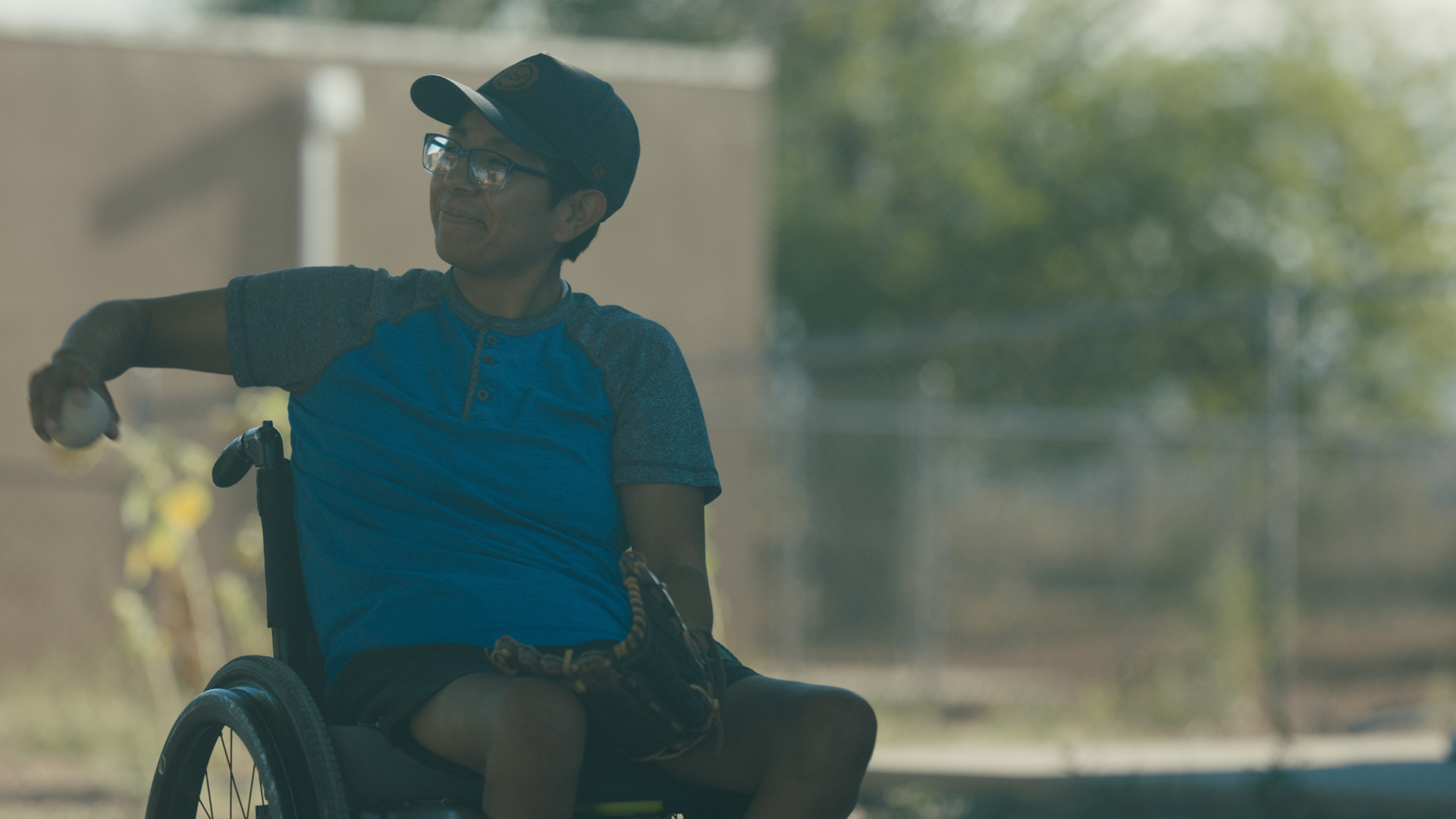
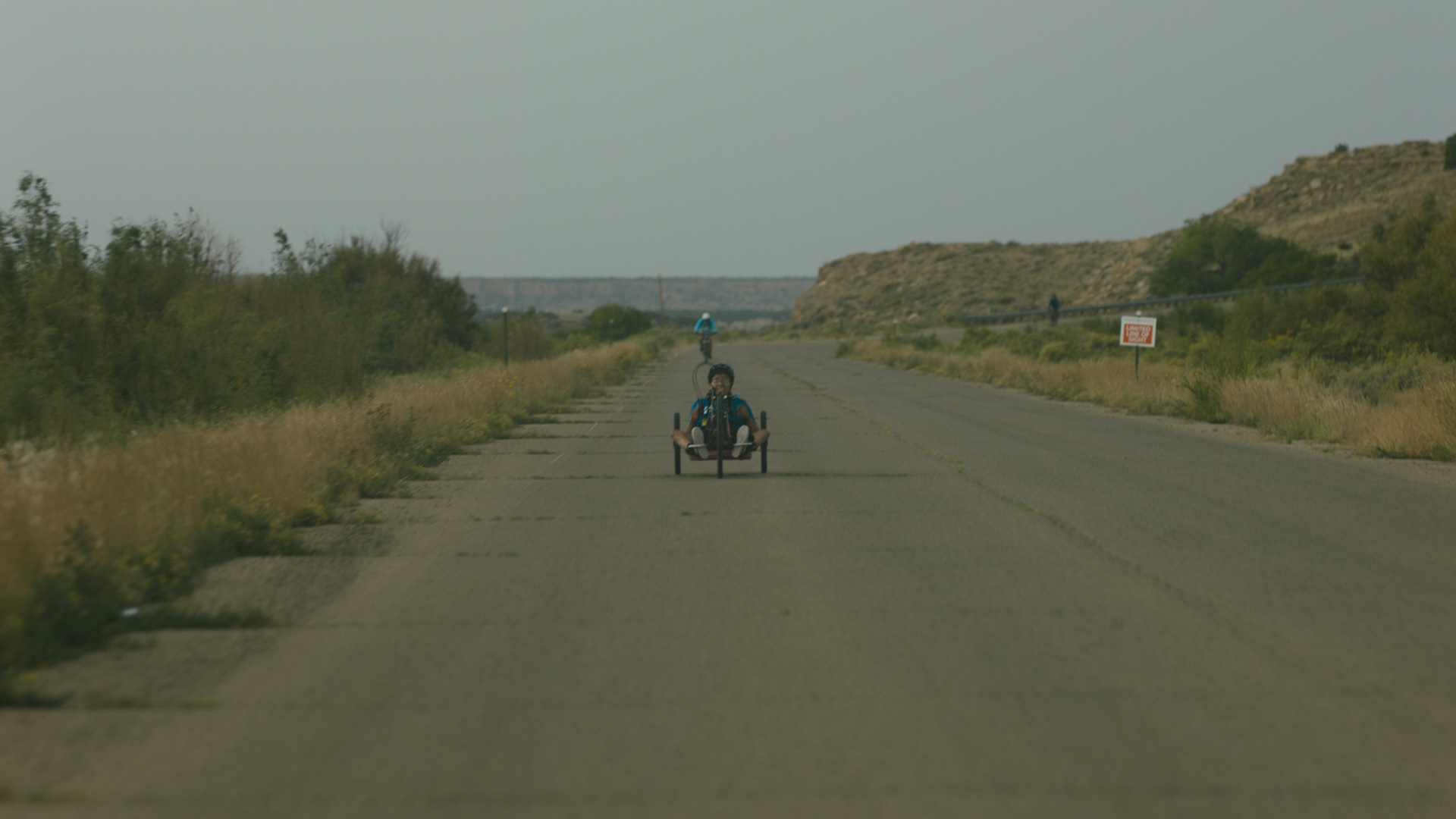
With Devyn’s film, we were able to bring a lot more intention. To say, you know, let’s set this shot up—and reset it again, get the tights and the wides, and slow things down a little bit, knowing that the lenses were going to play such a role in the artistic vision of the film. We really wanted it to feel warm and dreamy, and those lenses helped us achieve that.
With the other films, we mostly used the Art lenses that we have—so a lot of the 24-70mm, having more range. Those were also pretty fast shoots. They were very quick, so we wanted to be able to transition lenses incredibly fast and not miss moments while resetting a shot.
We also shot on different cameras. Remaining Native was shot mostly on the ALEXA and the FX9, whereas these shorts were shot with a much smaller FX3. We wanted that because a lot of the kids in the film weren’t used to being around production sets, and we didn’t want to feel so intrusive with a huge crew. So, it was just myself and Zack holding the camera, making it feel intimate, and not making people nervous by constantly switching gears, resetting, and reshooting—which can make people clam up.
The approach was a little different. Mostly, we spent a lot of time on the land, shooting on the 35mm and the 24mm, as well as the 85mm for more intimate close-ups.
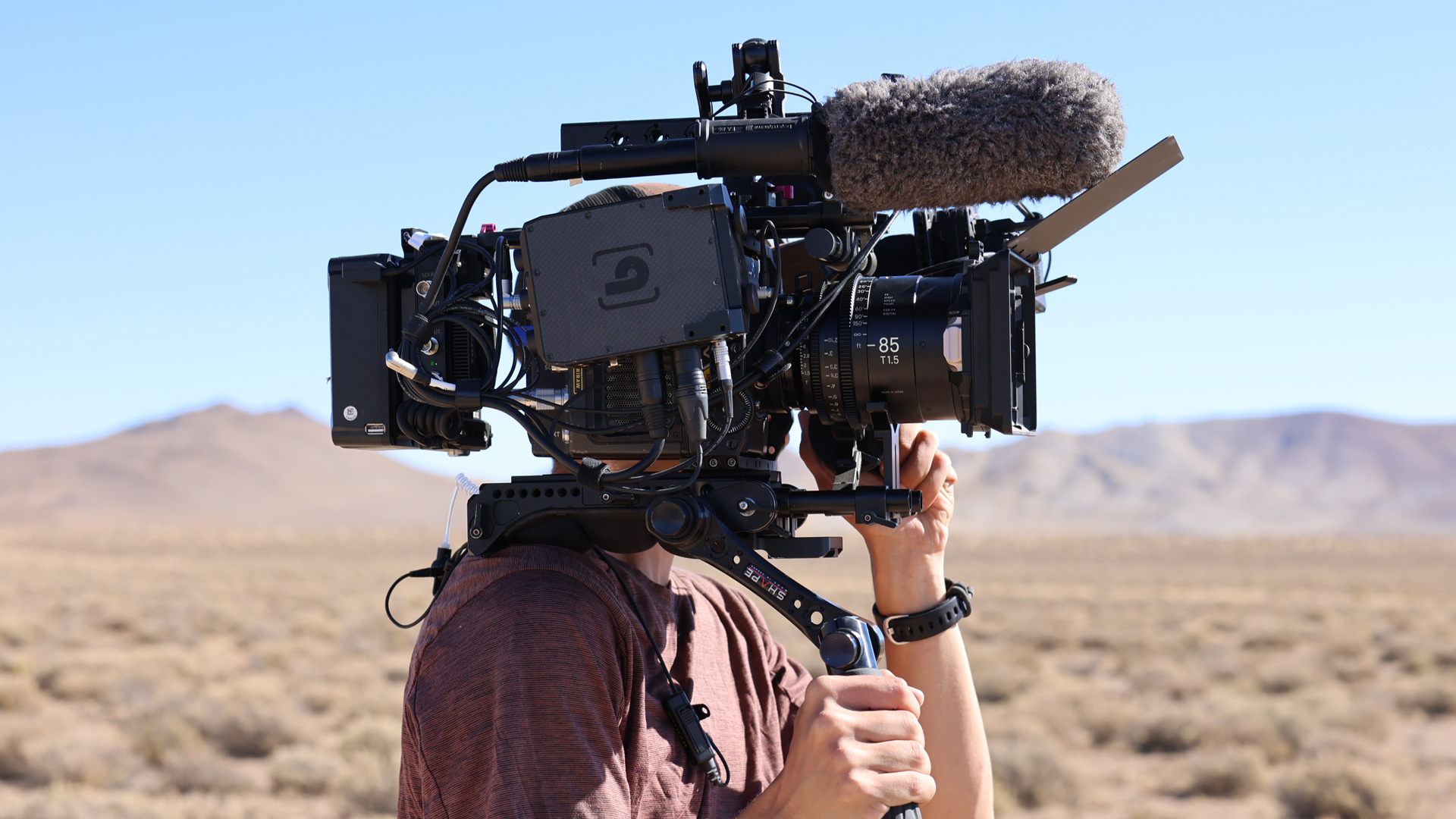
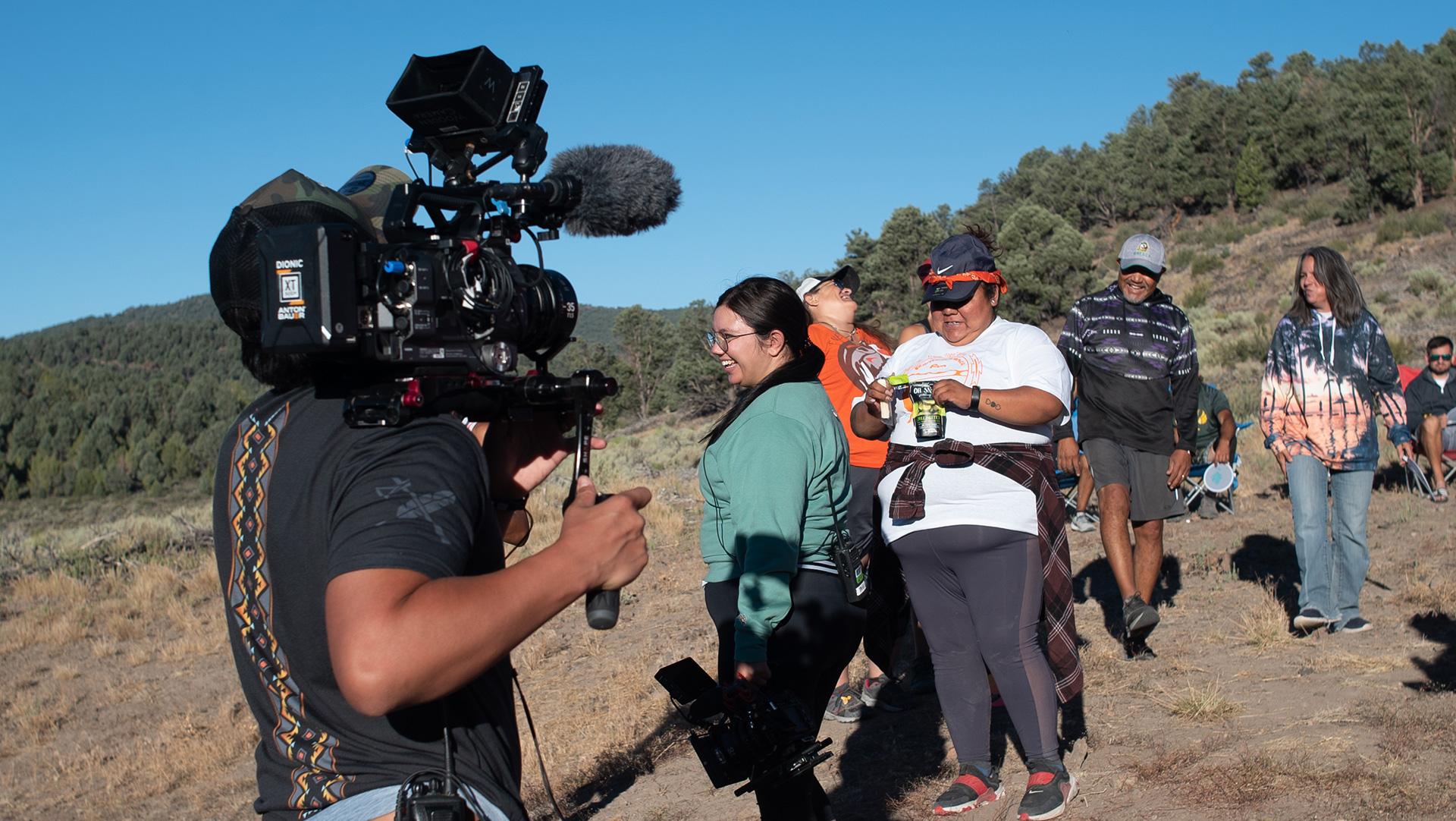
I want to share one more story because it was very fun. Zack and I were out filming in Montana for one of the mini docs, and we were on the longest lens we had—I think it was the 100-400mm—but we were just kind of panning across, and then suddenly, I saw a swish of a tail, and there was a pack of wild horses right there. They were drinking water, and it was so cool to come across things like that, hidden in the landscape. Sometimes you don’t see it when you’re far away or distant from the land but having that closeness with a tight lens like that… it was magical to stumble across.
We had a team of about six people shooting the run because covering 50 miles is incredibly challenging. We had to spread out, position ourselves strategically, and communicate via walkies to capture everything. I believe this particular shot was filmed by either Shai or Adam Conti. We each had assigned locations, and we were stationed along the route to get different angles. I wish I could take credit for it!
Sigma:
Those are truly unexpected pieces of magic that make producing documentaries so exciting. And it leads me to the next question, which is a perfect segue. Shooting docs is often guerrilla filmmaking at its finest—low budgets, small crews, and shooting in real locations with or without permits—particularly for independent projects. You prepare and budget as best you can to try and predict what you’ll need in terms of focal lengths, speeds, even format—spherical / anamorphic—but often (and speaking from experience) this can change rapidly depending on opportunities that present themselves. Were there any Sigma lenses that stood out from the rest that the production leaned on more than the others in this regard? Any surprises?
Bethmann:
That’s a great question. Like you said, everything is extremely unpredictable. I would say that we took a lot of learnings from having to film over the course of two or three years.
I think one thing we used a lot that cinematographers sometimes, you know, scoff at is the idea of needing to use autofocus so much. You know, they spend time on craft and want to control everything. But when you’re trying to follow someone as quick as Ku, needing to be able to catch him using autofocus was something we relied so heavily on, especially with the Sigma photo lenses, to do that efficiently.

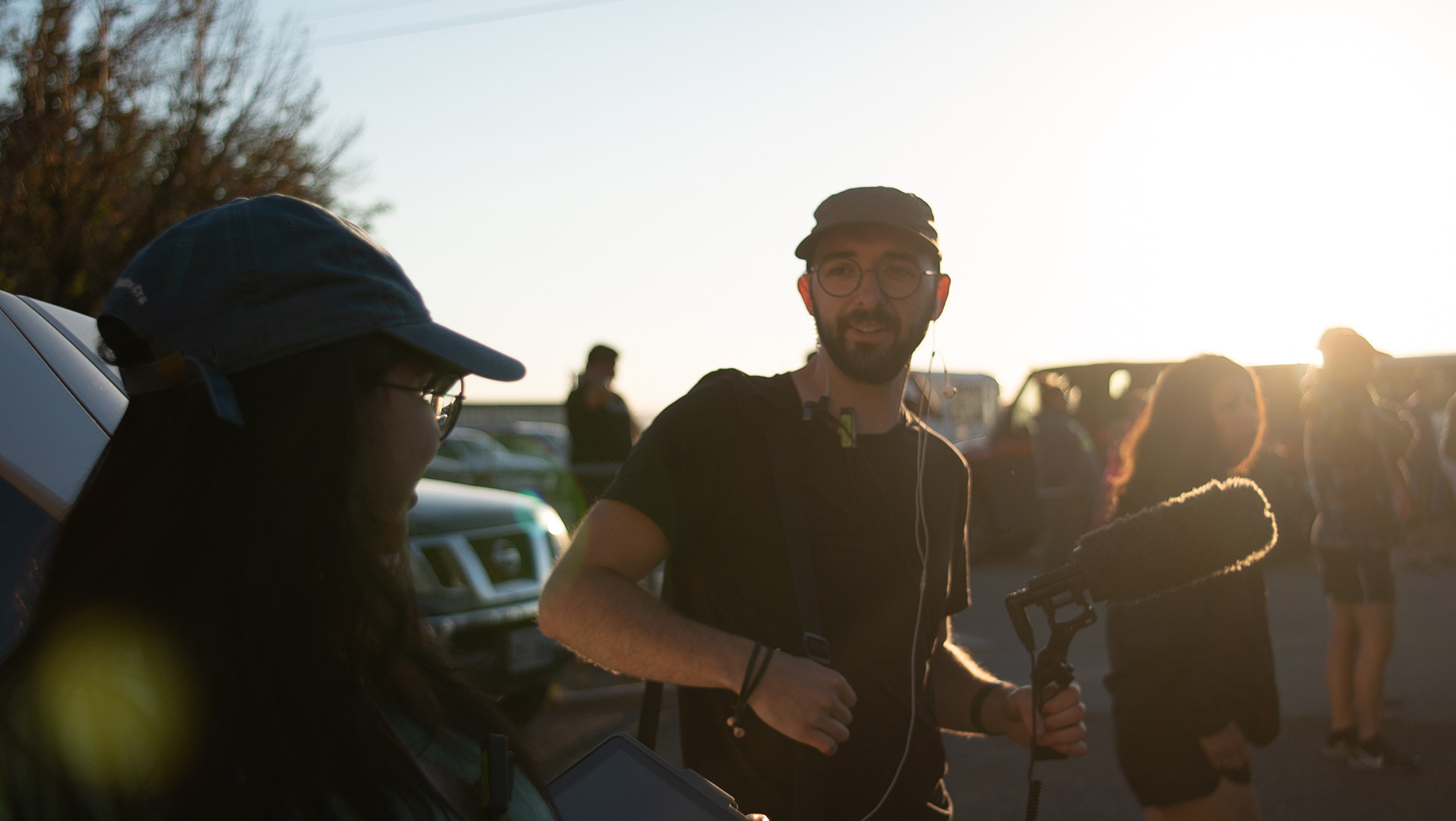
So that was surprising—and not surprising—because as much as the craft is so important, it’s about capturing the story in the best way you can. That could be with a small camera that you just powered on quickly so you could catch a moment, or, you know, you could spend time waiting for the ALEXA to wake up for 30 seconds before you’re able to use it.
Figuring out what we needed at certain times—we had to adapt over the course of filming. As much as we loved using such an amazing camera like the ALEXA Mini, when you’re in the desert and must charge all the batteries, set up, and predict those things, it’s not always the best run-and-gun type of camera. So being able to adapt and interchange different lenses was good.
But primarily, we stuck to some of the Cine prime lenses, knowing that we were going to get exactly what we needed in those moments. Because we were spending so much time in the community—we weren’t just there for a quick interview or shoot. We were spending time with and without the camera. A lot of the time without the camera certainly helped us think about how we approached filming a scene—or even not knowing it was a scene until the edit.
You know, there are so many things we shot, like the fishing scene. We were actually fishing for the majority of that scene in the film, and then we picked up the camera for a little bit just to show what was going on. So it was nice to be able to take our time.
And then, Zack, didn’t we also have access to the 24… what was it? The really wide lens? Which one was that?
Zack Kiszka (Line Producer/Cam Op):
The 17.
Bethmann:
17, yes! That was cool.
Kiszka:
The 17mm Contemporary — that was fun.
I was just going to add one thing, too, about something surprising—the PL mount of the cine lenses. We didn’t have PL for the whole shoot; we had different times when we had PL versus—other mounts. Having the PL was nice because we could adapt it to either our Sony mirrorless cameras, or if we had access to an ALEXA, we could mix and match as we saw fit. And those Sigma PL lenses are super light, too. But overall, an amazing thing about the Sigma lenses, across the Cine and the still lines, is the consistency between lenses.
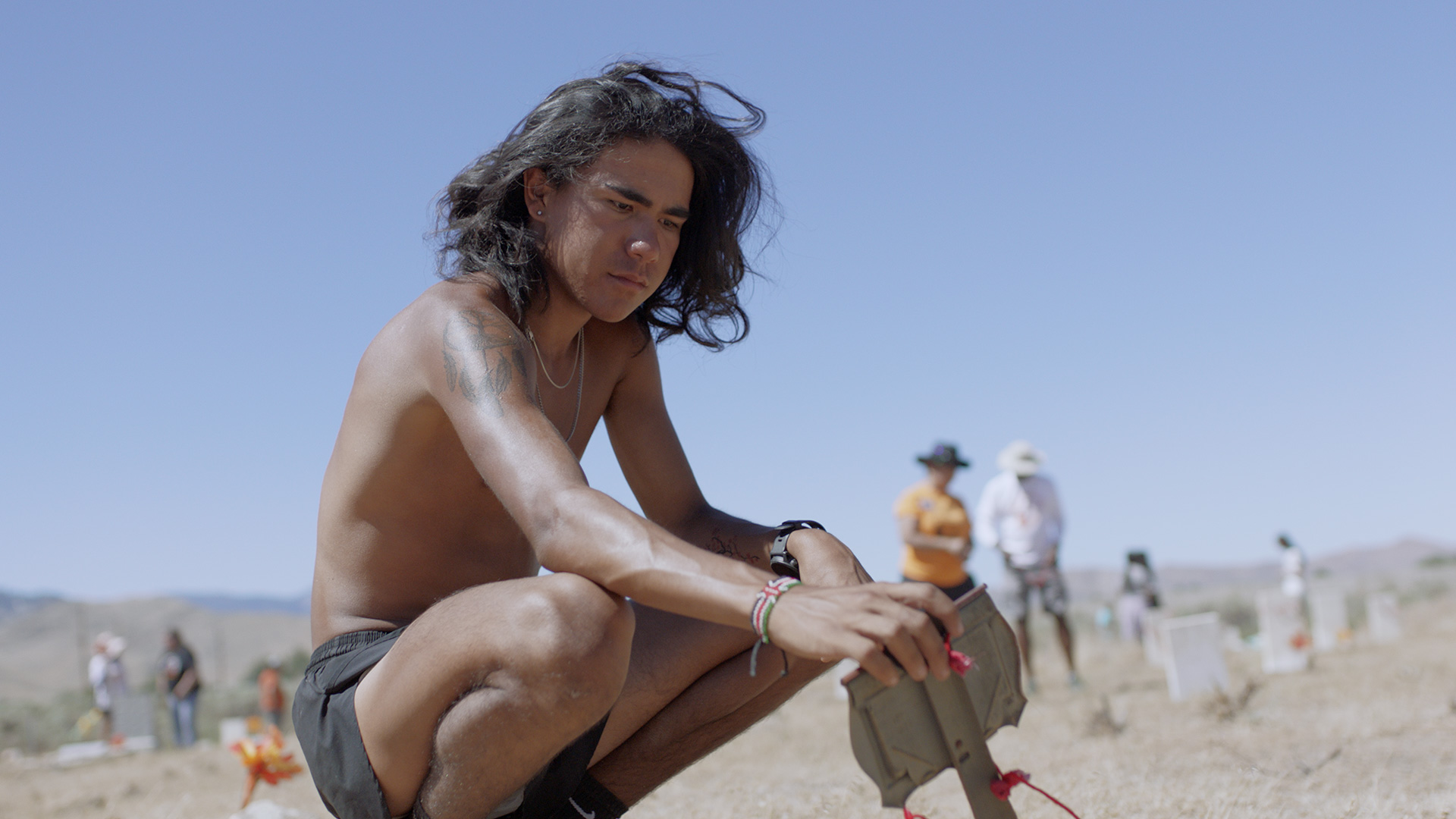
Sigma:
As expansively thematic as Remaining Native is about legacy, trauma, and the Native American experience, at its core, Remaining Native is rooted by a young runner. As such, the film features a lot of dynamic and physically intense moments, particularly during the running scenes and track meets. Tell us about the collaboration and challenges with your co-DP Shai Ben-Dor here. Was there a synergy between you two in terms of visual storytelling and the use of specific Sigma lenses to capture his craft on-the-fly? And tell us a bit about pre-production…
Bethmann:
We didn’t really have pre-production.
We got permission to go out and film once we decided that we wanted to try to capture the story, and then we were just kind of out there…doing it.
But the thing is, my cinematographer, Shai (DP Shai Ben-Dor) —you know, we had a relationship beforehand. We went to college together, and I had worked with him several times before. We had a shorthand with one another, and I think Shai is someone who is, well, he’s a runner. That was a no-brainer. He ran cross-country, so he was willing to get right up close with Ku. I trusted his decisions in wanting to really capture the more visceral aspects of the cinematography—to make it feel like running. He was the perfect fit to do that.
We were also using an electric skateboard. I can’t skateboard, but he used one to track Ku around. When Ku was on the track or the road, Shai was literally shooting on the skateboard, holding the control, pulling focus, and operating the camera at the same time. It was very impressive.
I think there was a lot of synergy and trust. I knew that if he was going to fall off the skateboard, the camera would be protected—he’d sacrifice himself first. Those things were really important, and I think we both had skills that complemented each other.
I wasn’t planning on shooting at all when I first started the doc because I didn’t particularly have a background in filming, other than small videos I would make myself. But Shai noticed that the people in the film—Ku’s family and community members—reacted very differently to me holding a camera than to him. He was the one who empowered me to say, “Here, pick up this camera. Why don’t you shoot?”
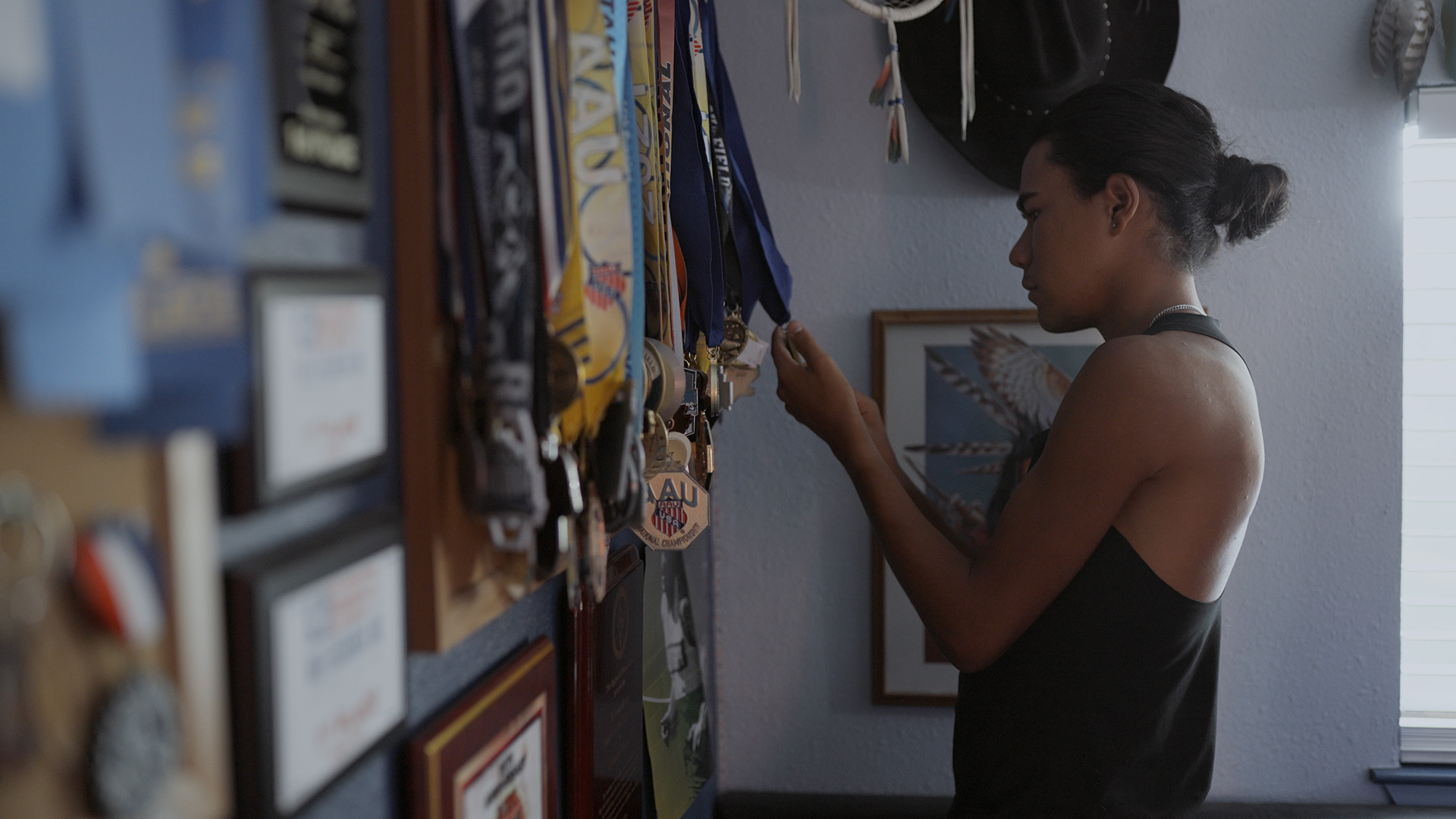
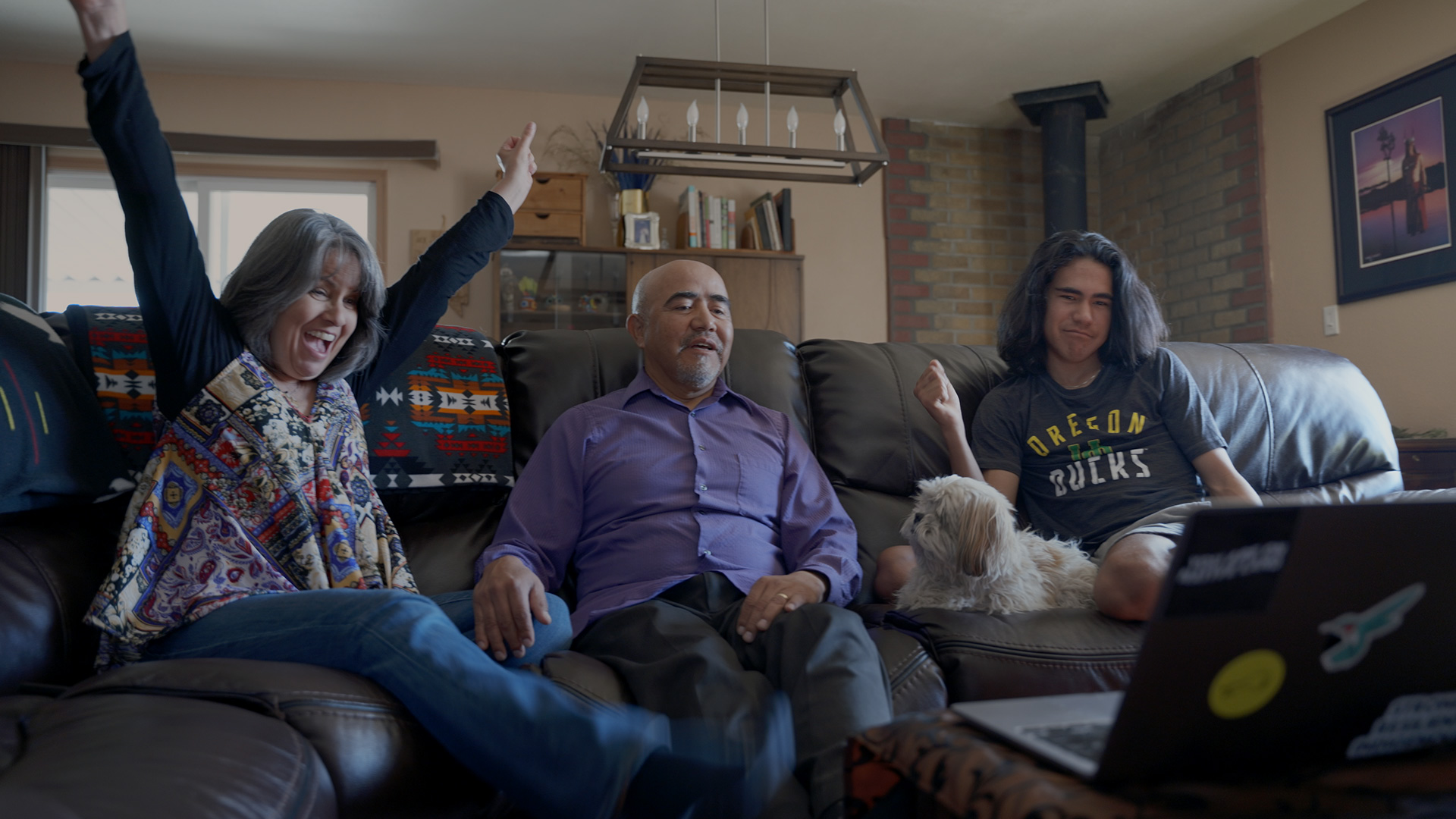
Because I was able to access more intimate moments with the family that he couldn’t, that gave me more confidence, and I started learning along the way—starting to make more decisions on how I wanted to shoot something. Shai’s cinematography has a lot of energy, whereas I’m a little more contemplative. I want to sit there, hold a shot longer, and focus on details—on landscapes and sitting in a moment—versus chasing the moment.
I think we actually had a great dynamic. He taught me so much—same as Zack. Zack really played the role of assistant camera, was flying the drone, and was in there doing all the sound. We all had to have a solid team dynamic to make it happen.
Impact and future work
Sigma:
Speaking of introspective moments and the difference between your approach to a scene compared to Shai’s… There’s an incredibly special, incredibly vulnerable sequence in the film on the eve of the race where Ku and other tribal members share stories about their familial ties to the Stewart Indian School and other boarding school experiences. As the stories unfold, day quickly slips into night, but the visual quality remains so striking and crisp. Can you tell us more about that sequence and how shooting in low light affected the approach? Did the high-speed capabilities of the Sigma lenses, for example, help capture those intimate moments as night fell, and were there any challenges shooting into the night that the lenses helped you overcome?
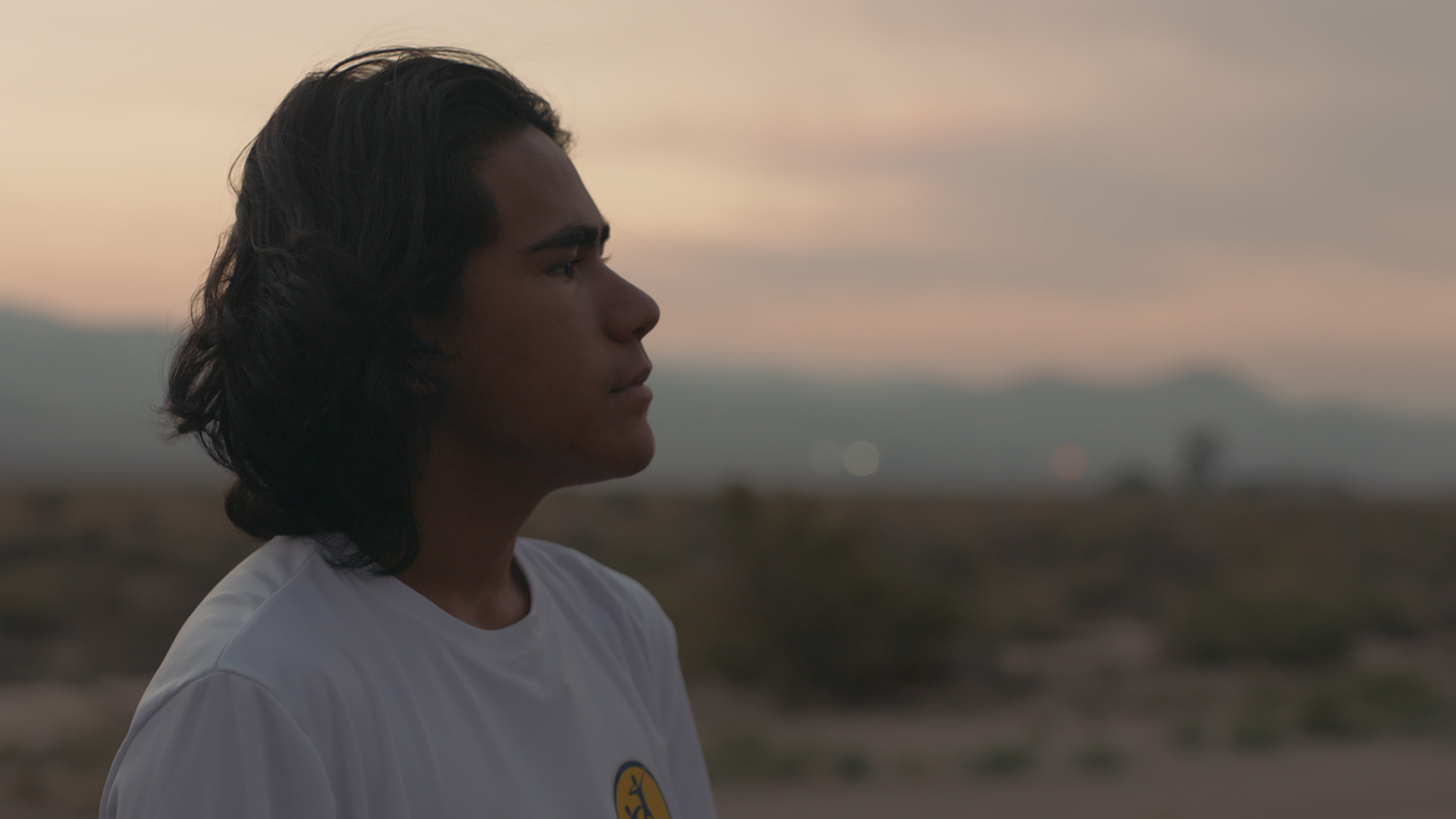
Bethmann:
I think for the circle—when we first went to film the run, that circle moment was so powerful. By the second run, which is what’s featured in the film, we had a better idea of what to expect and anticipate.
The first year we tried to film it, no one was mic’ed, and we were completely unprepared—especially for the changing light. This time, we were able to plan better. We actually had three cameras running simultaneously, shooting on Sony FX9s, which handled low light much better.
We also stopped down to T2 in order to capture everything. And because the community was familiar with us—we had been filming with them for the past two years—they knew we were there and were comfortable with our crew. That allowed us to be more front and center for some of the close-up shots without being invasive. We didn’t want to take away from the healing happening in front of us, so we tried to stay in the background as much as possible. For that scene, we primarily used prime lenses.
Kiszka:
We used little lanterns. That’s where all the artificial light was coming from—just lanterns.
Bethmann:
The hardest part of the scene was the transition of light. It made editing difficult, but we ultimately let the scene play out in real time in the edit. The biggest challenge, though, was the audio.
Out of nowhere, these crickets appeared, and they were so loud. But it was also quite powerful to see people gathering intentionally—not because there was a fire to keep warm, but simply to be together.
I remember asking, “Where are they even coming from?” And when we worked with our sound designer, his first pass included a fire crackling sound. I had to tell him, “Actually, there was no fire there.” It was illegal to have one in northern Nevada during fire season. It was really about finding a different way to bring that sense of presence and gathering into the scene.
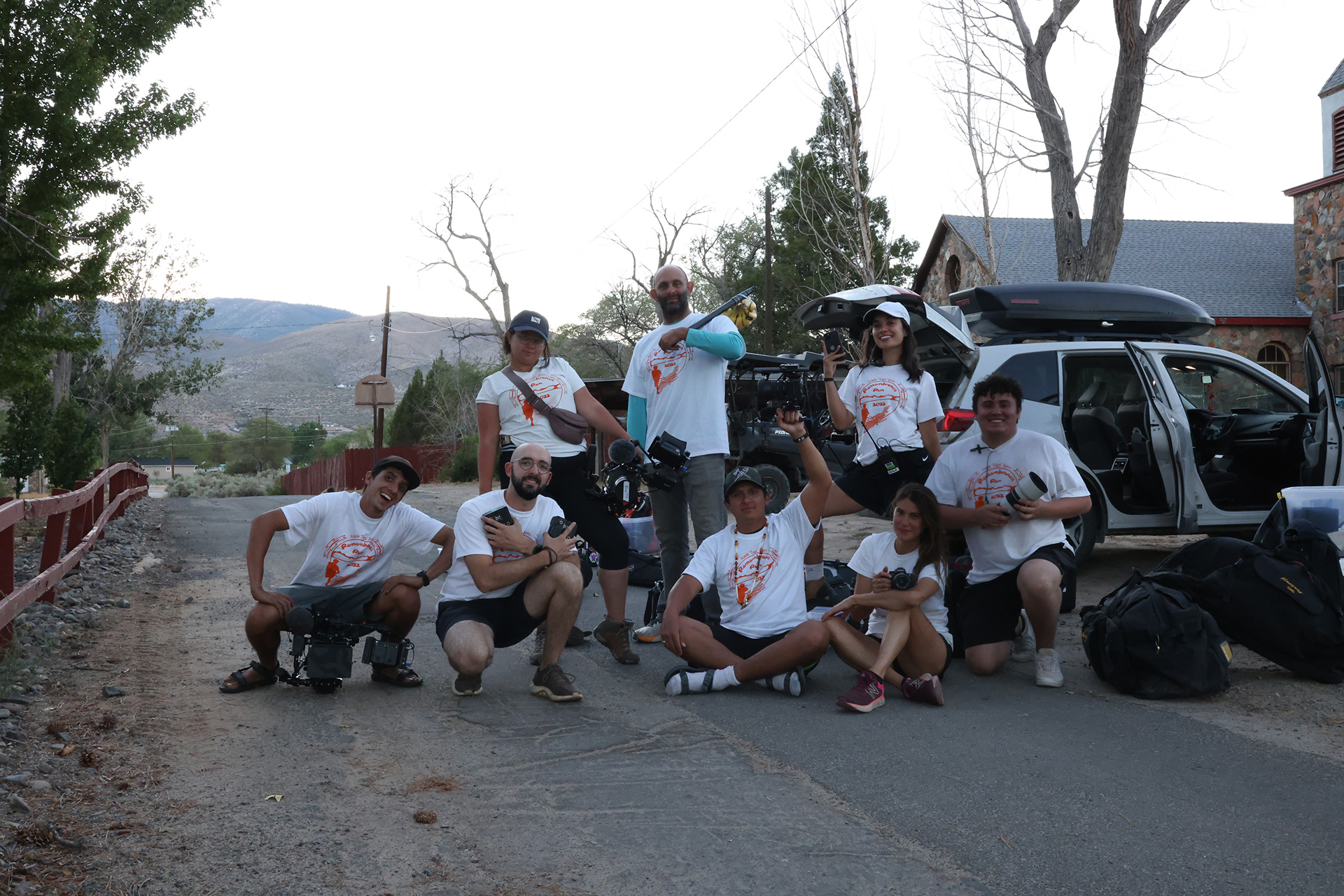
Sigma:
Having your first feature film premiere at a major festival, let alone receiving awards, is a dream for most filmmakers. Can you tell us about your, and the Remaining Native team’s, overall experience at SXSW, in terms of the reaction to the film as well as the overall spirit of the festival?
Bethmann:
Yeah, we were excited to be at SXSW — not just because it’s a large festival with a big platform that would help launch our film, but because it’s Austin, Texas. A place historically responsible for much of the erasure of Indigenous people.
Bringing a Native presence there, along with the collaborations and partnerships we formed for the premiere, made it truly special. Before coming to South By, we reached out to the Austin Powwow Committee, and they came out to support our 5K run and attended the screenings. They were able to talk about what it means to be Indigenous in Austin on a platform like that. We also partnered with the Indigenous Cultures Institute and the UT Indigenous program. Having them as on-the-ground support helped us feel welcomed at the festival, ensuring we were using our platform to speak on real issues happening in that space. The film became a tool for education and a way to share Ku’s story—what it means to be a Native American teenager today.
Austin also has a huge running community, and being in a place where runners were excited to join us and attend the screenings was incredible. Each screening had a different energy—one had a strong runner presence, where the audience laughed at insider jokes about split times and reacted to Ku’s speed. Another had more Indigenous audience members, who connected deeply to their own family histories and stories. Hearing people share about their families was incredibly moving and powerful.
It was also significant for Ku himself. He’s grown so much since we started filming, and watching the film captured such a pivotal time in his life—his transition to college. Now that he’s about to be a senior, the film offers a space for him to reflect on that year. Seeing so many people come up to him, tell him how inspiring he is, and offer their support was deeply meaningful.
We were also grateful for the festival’s partnership. They were incredibly accommodating—when we asked for tickets to share with the community or help with promotions, they stepped up. We also had our own photographer with us to document everything, which was fun. And using the Sigma BF, we were able to capture our premiere in a special way, continuing our connection with the Sigma family.
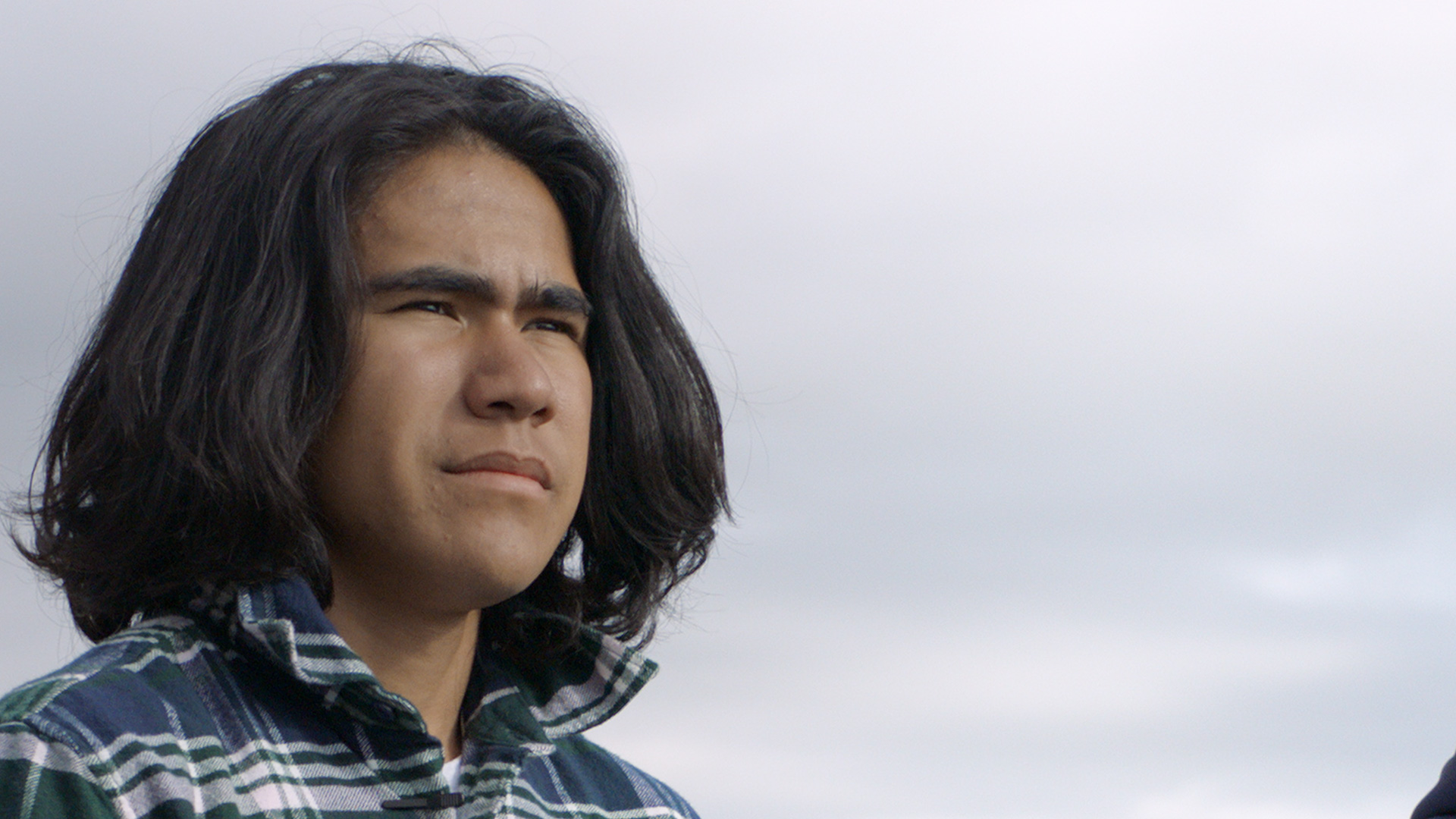
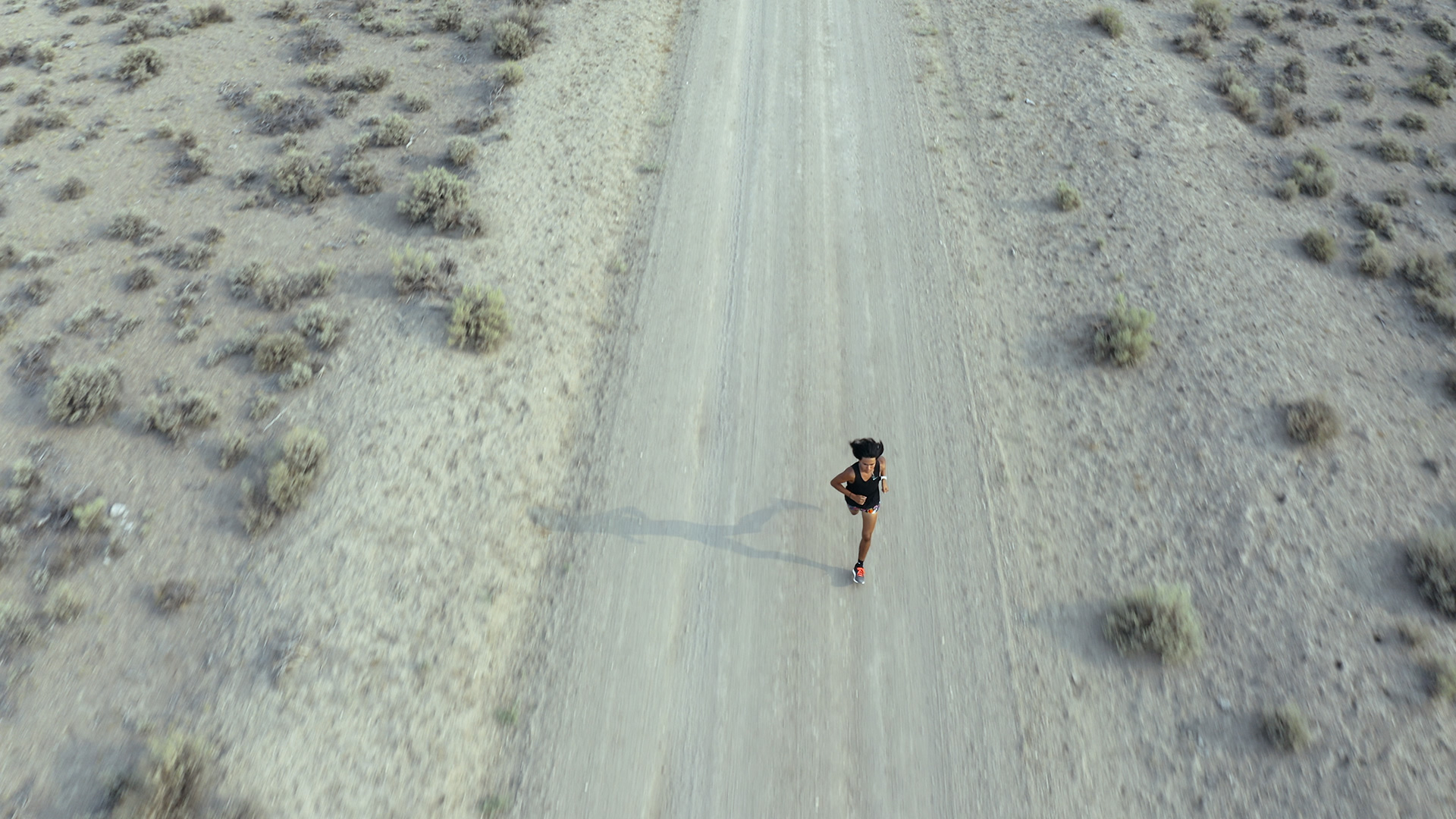
Sigma:
It obviously seems as though you’ve had a positive experience working with Sigma lenses. And now seeing the continued success of Remaining Native on a festival tour, do you see them playing a part in any of your upcoming projects? What’s next on the horizon for you, Paige?
Bethmann:
If Sigma continues their partnership with me, then of course! I would absolutely love to continue that because I think what we achieved with this film was making it as beautiful as possible. Too often, Indigenous stories are shot in a way that focuses on trauma, what some call “tragedy porn.” I wanted to ensure we captured a lived-in experience—one that highlights the beauty in the lives of the people in the film. While the film acknowledges the historical struggles of Native people, its focus is not on tragedy. Ku’s family is incredibly supportive, with strong, healthy relationships—not just with each other, but with the land. We wanted to bring that to light, showing the beauty, hope, and resilience in Indigenous communities.
Knowing we could visually reflect that beauty was powerful. Even while working on Devyn’s film, we were able to be more intentional—thoughtful in composition, capturing details, and slowing down the visual flow. Moving forward, I can see myself taking that approach even further, focusing even more on intimate details.
Right now, especially in today’s world, Indigenous stories hold solutions—solutions for health, for relationships with the land. They help answer questions like: What does a healthy river look like? What does a thriving community look like? How do we return to the ways our ancestors cared for the earth? I want my work to bring these stories forward in a cinematic and deeply immersive way—something that allows people to connect with aspects of the world they might walk past every day without noticing.
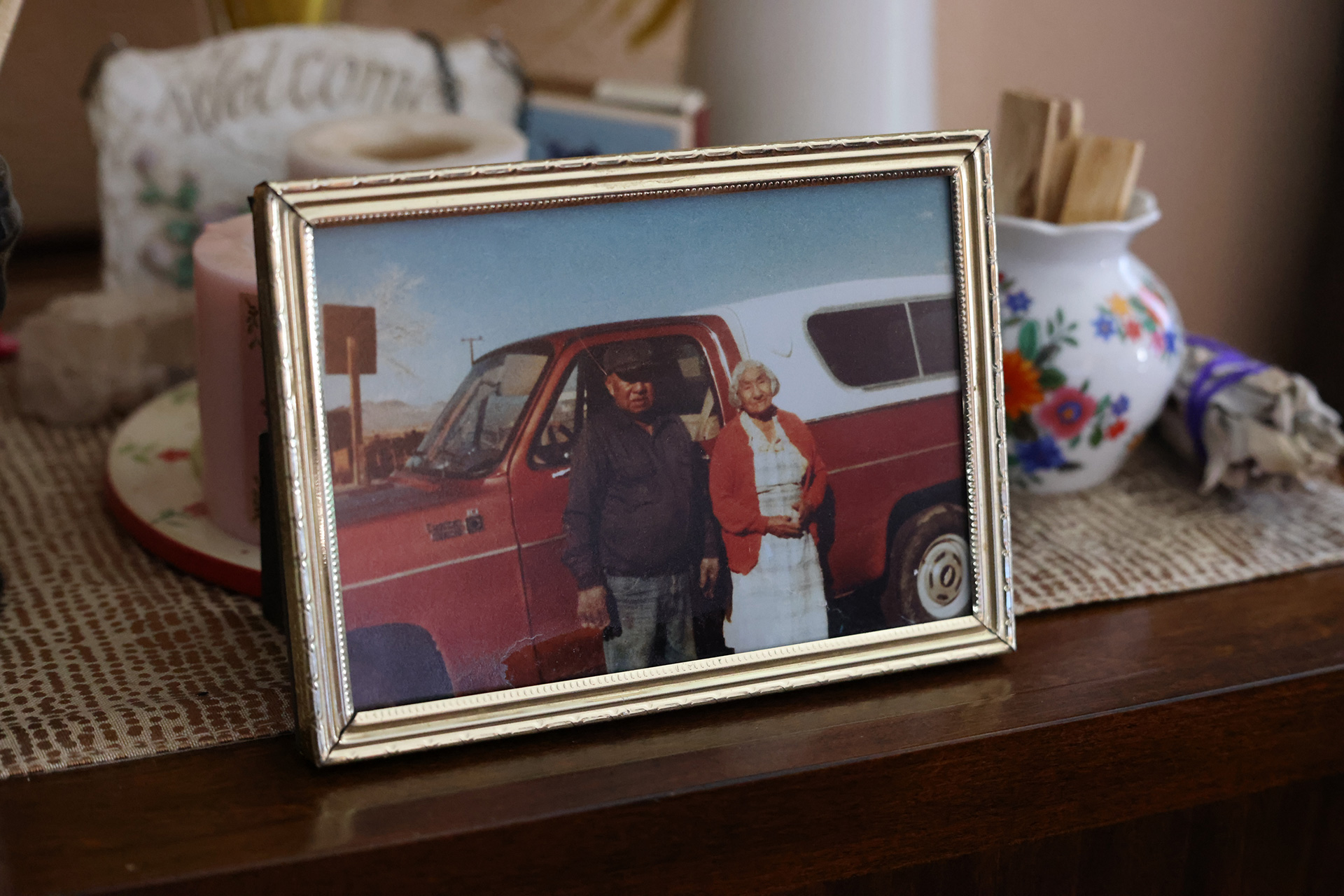
One idea I have is a film about maple syrup. I’d love to shoot it in a way that’s rich, slow, and immersive because maple syrup is part of our (Haudenosaunee) creation story. The process behind it is all about hard work—distilling something to perfection over time. To do that, you have to slow down and be patient. As a filmmaker, I want my craft to mirror that experience—to put in the same level of dedication, patience, and care to bring out the essence of the story.
Beyond filmmaking, we also have plans for community screenings. Impact is a huge part of our work—not just in how we share the film after its release but in how we make films. I truly appreciate having ongoing partnerships, like the one with Sigma, because cameras can be tools for storytelling and education. Ku himself became interested in filmmaking through this process. At one point, after being followed by cameras for so long, we handed him one and said, “Here, try it.” He started shooting his own footage and got really excited about it.
Encouraging younger storytellers to explore this technology—to experiment with it, get familiar, and create something of their own—is just as powerful as the finished film itself. That community-driven approach has been central to this whole process.
We have big plans for this film, and this is just the beginning.
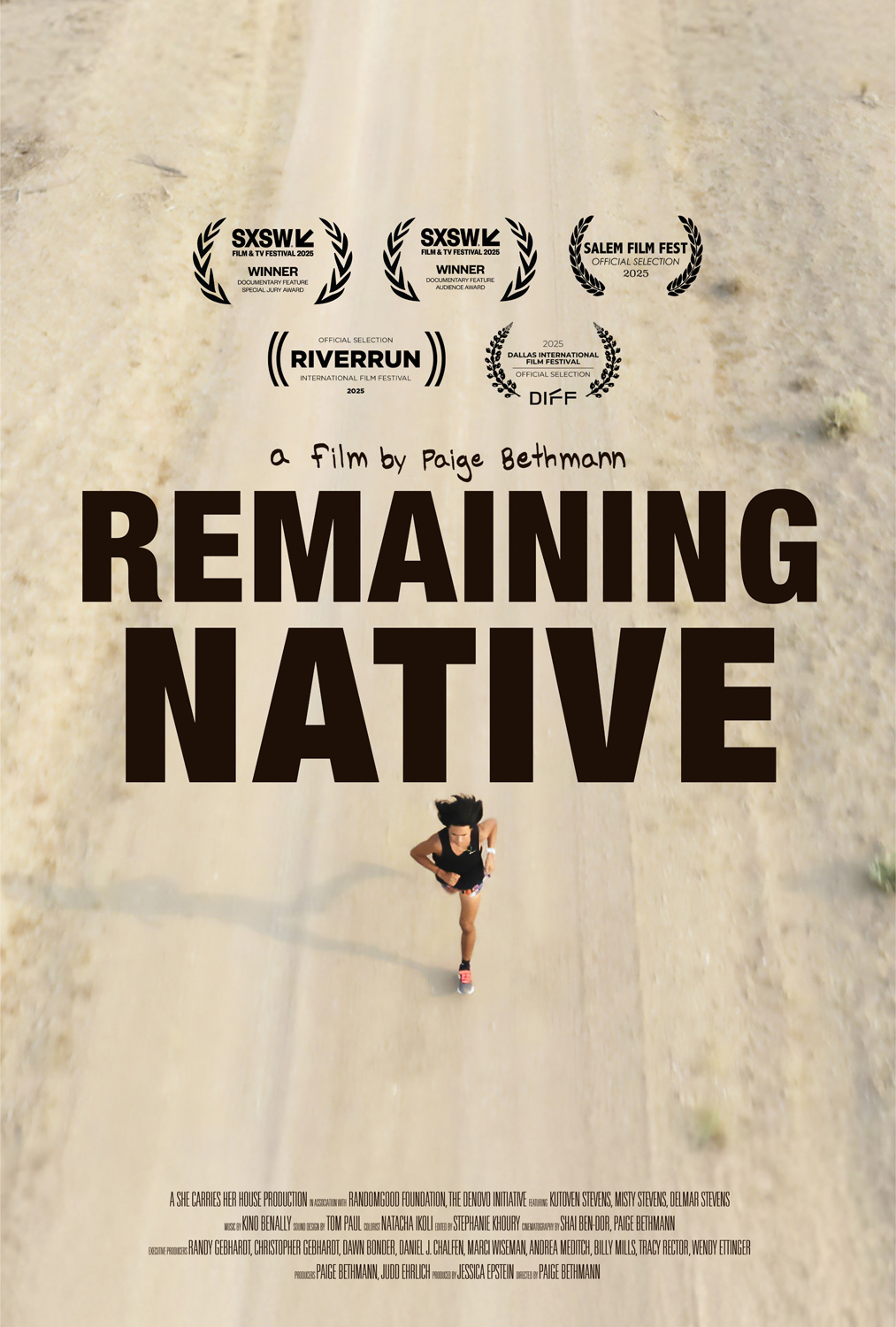
Sigma:
Now that the film is out and Ku is beginning to see its impact—the stories being told around it, the conversations it’s sparking—does he feel like he’s growing into his name? Has he shared any reflections on that with you?
Bethmann:
Yeah, it’s funny because at the Q&A at South by, someone asked Ku that exact question. He said, “Maybe I’ve put a dent in it,” but he still doesn’t feel like he’s fully achieved his name. He knows there’s a lot more work to do, and he’s ready to put in that effort. Hopefully, one day he’ll feel like he’s lived up to it. That mindset is so reflective of who he is—not just as an athlete but as a person. He’s ambitious, determined, and humble, yet fiercely competitive and always striving for more. That relentless drive is what pushes him forward.
Ku’s father, Delmar Stevens, says Kutoven is a Paiute word that translates to “bring light from the darkness.”
“When you look at that name, and the responsibility that comes with it, it’s big,” Delmar Stevens said. “But I see Ku is up for that. He has been doing that already.” (this is a scene in the film and also referenced here:
https://www.underscore.news/culture/running-down-a-dream/
Sigma:
Thank you so much. Paige, do you have any closing thoughts and can you tell us where can people go to watch Remaining Native, as well as the rest of your work?
Bethmann:
We’re really proud of the result, and it’s exciting to see what we were able to accomplish, especially given how expensive high-quality camera packages can be. Having support from partners made a huge difference, allowing us to achieve the level of quality we envisioned. It was truly a team effort, and we’re grateful to everyone who believed in the project. And thankfully, the lenses held up—even after all that time in the desert!
On our website we have been posting our screenings and there’s going to be more posted up there if anyone wants to buy the film, they can do that. And hopefully the film will get sold and distributed to be able to be seen widely.
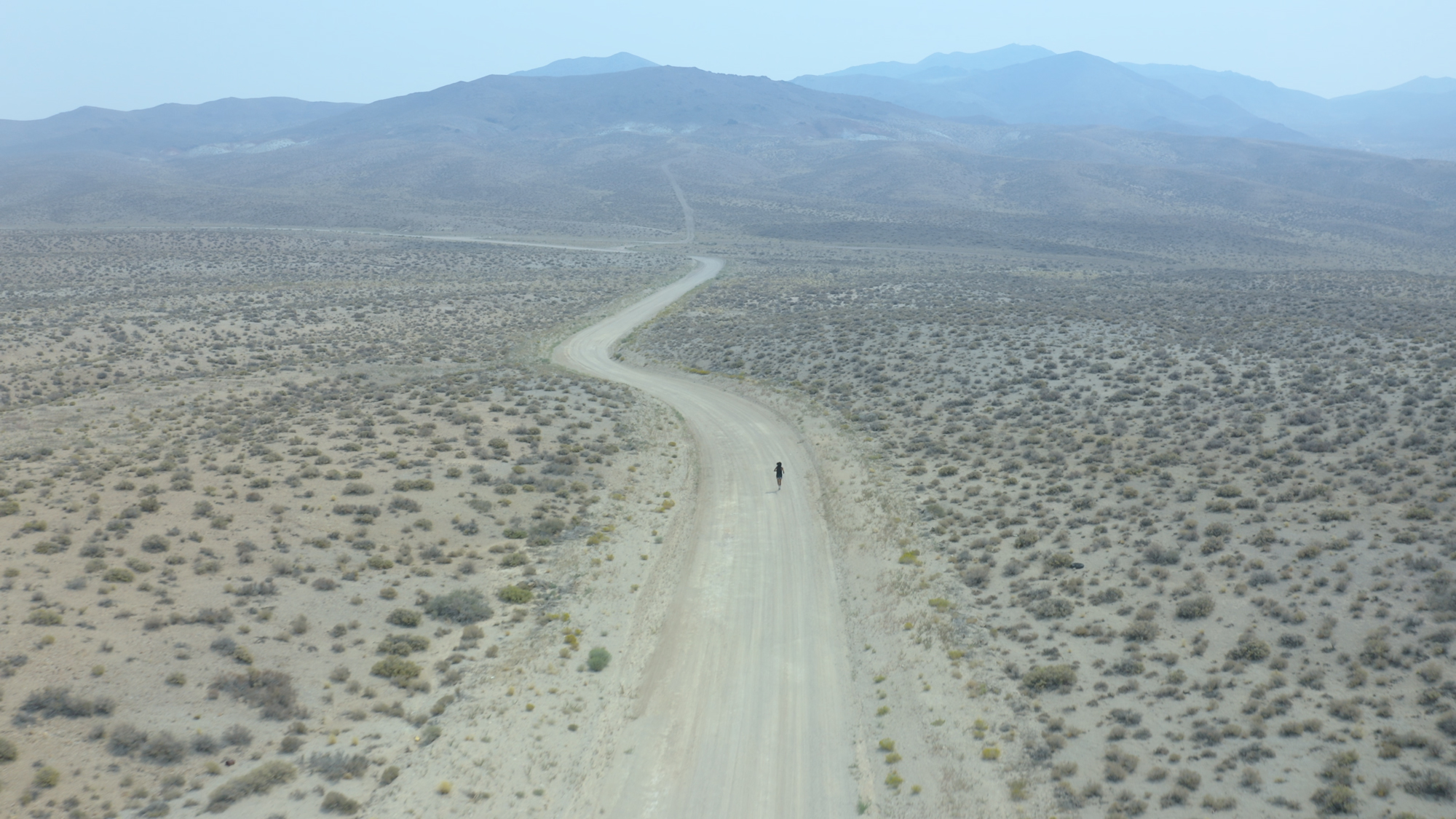
Learn more about Remaining Native and find screenings
